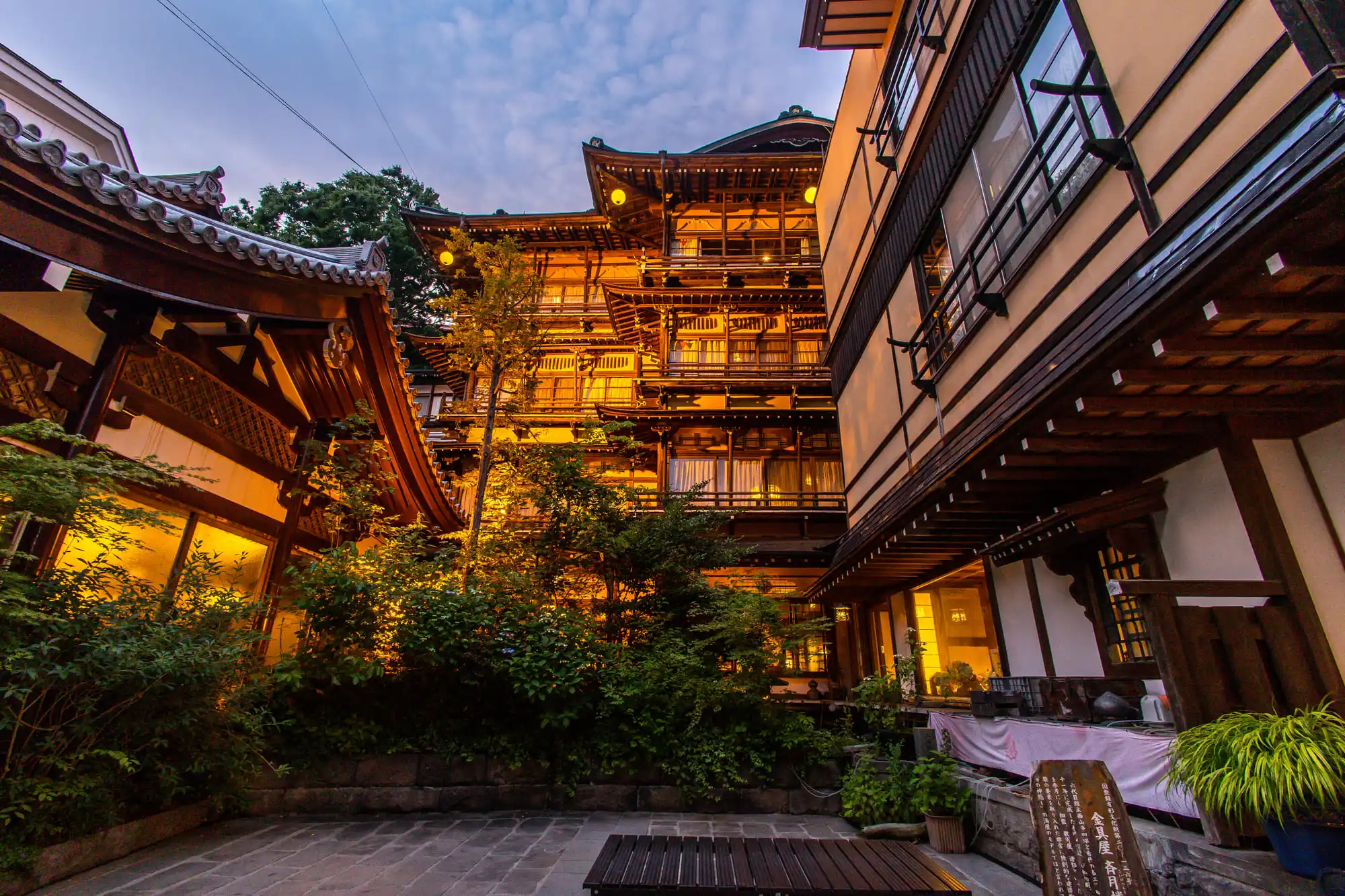
Rekishi no yado KANAGUYA Interview Article
Rekishi no yado KANAGUYA Overview
Shibu Onsen, located in Yamanouchi Town, Nagano Prefecture, is a historic onsen town believed to have been discovered by the monk Gyoki during the Nara period (710–794). Kanaguya, a long-established inn in Shibu Onsen founded in 1758, is renowned as a place where guests can stay in a historically significant and artistically crafted building. Recognized as a Registered Tangible Cultural Property in 2003, its luxurious and nostalgic atmosphere is said to have inspired the setting for Studio Ghibli's anime Spirited Away.
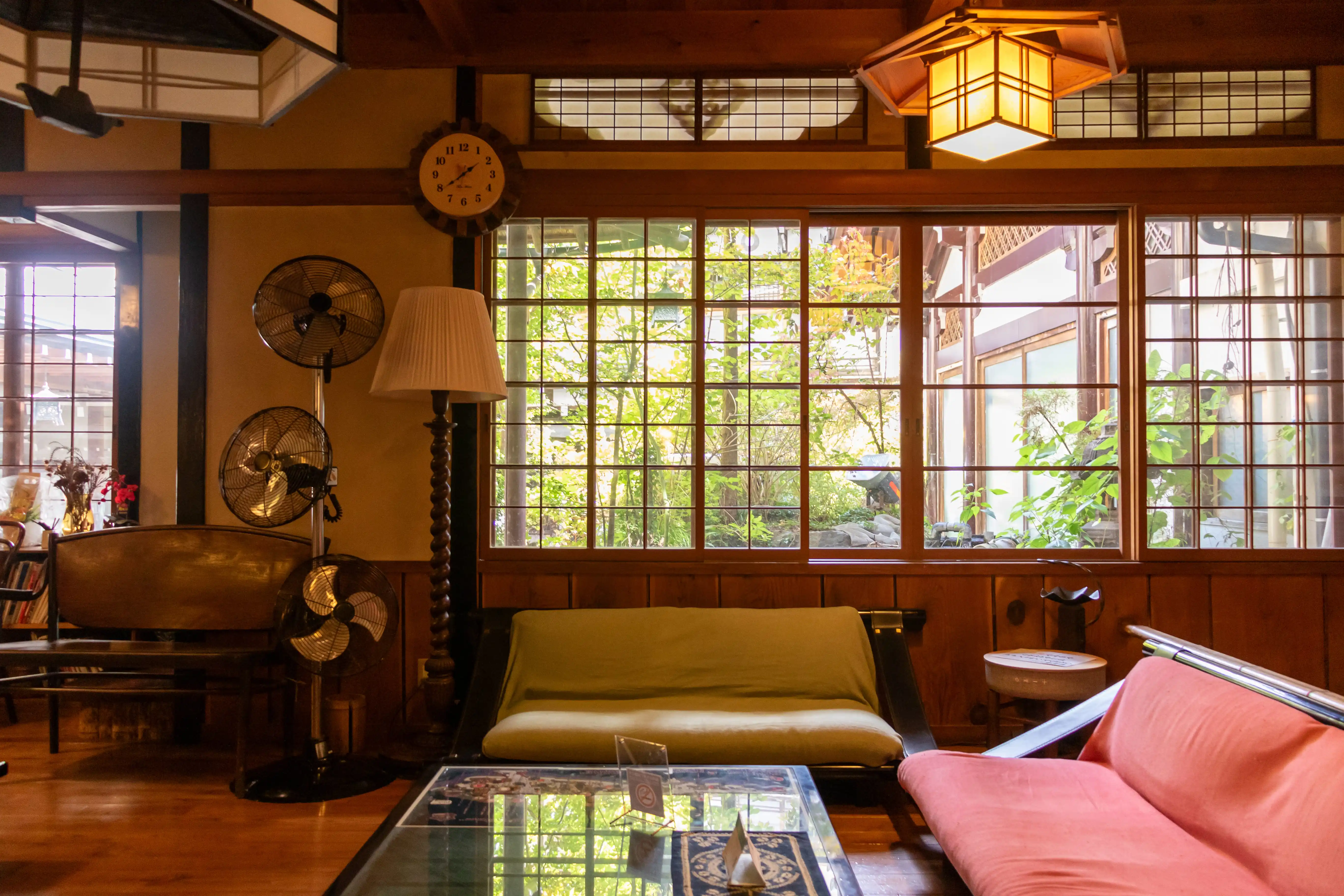
Kanaguya is a captivating ryokan where guests can experience early Showa-era architecture and onsen culture just as it was. The ryokan has four private onsen sources, offering a rich onsen experience across three large communal baths, each with unique interior designs and spring compositions, as well as five private baths.
The nearest station is Yudanaka Station on the Nagano Electric Railway line, which is the final stop and can be accessed by transferring from JR Nagano Station.
To reach Shibu Onsen from Tokyo, take the Hokuriku Shinkansen to Nagano Station, then transfer to the Nagano Electric Railway to arrive at Yudanaka Station. The journey takes about three hours.
For travel from Tokyo to Nagano, the JR EAST PASS (Nagano, Niigata area) offers a convenient and cost-effective option, therefore consider taking advantage of this pass.
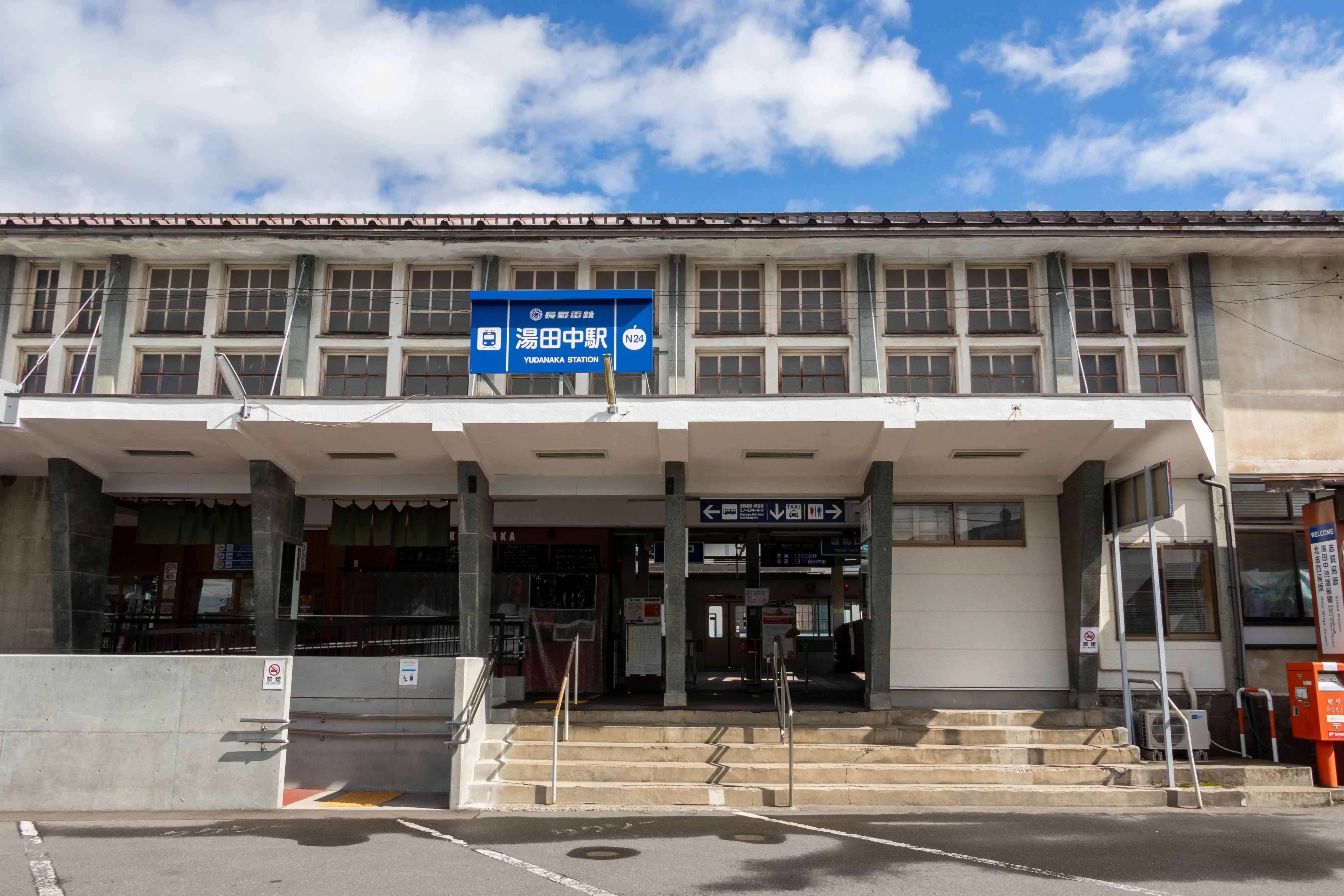
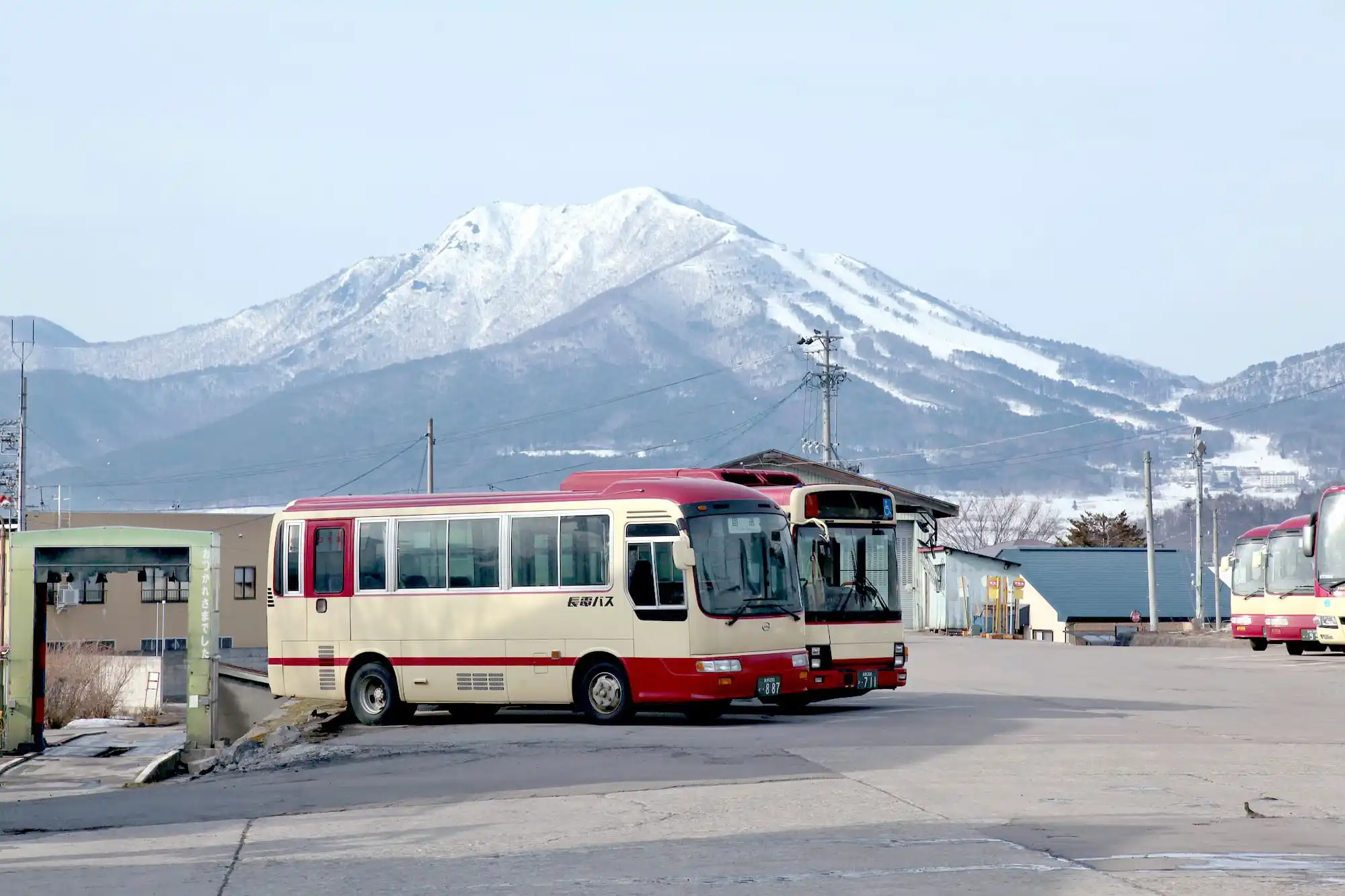
From Yudanaka Station, take a bus for about 10 minutes and get off at either the "Shibu Onsen" or "Wagobashi" stop. From there, it’s about a 2-minute walk to Kanaguya.
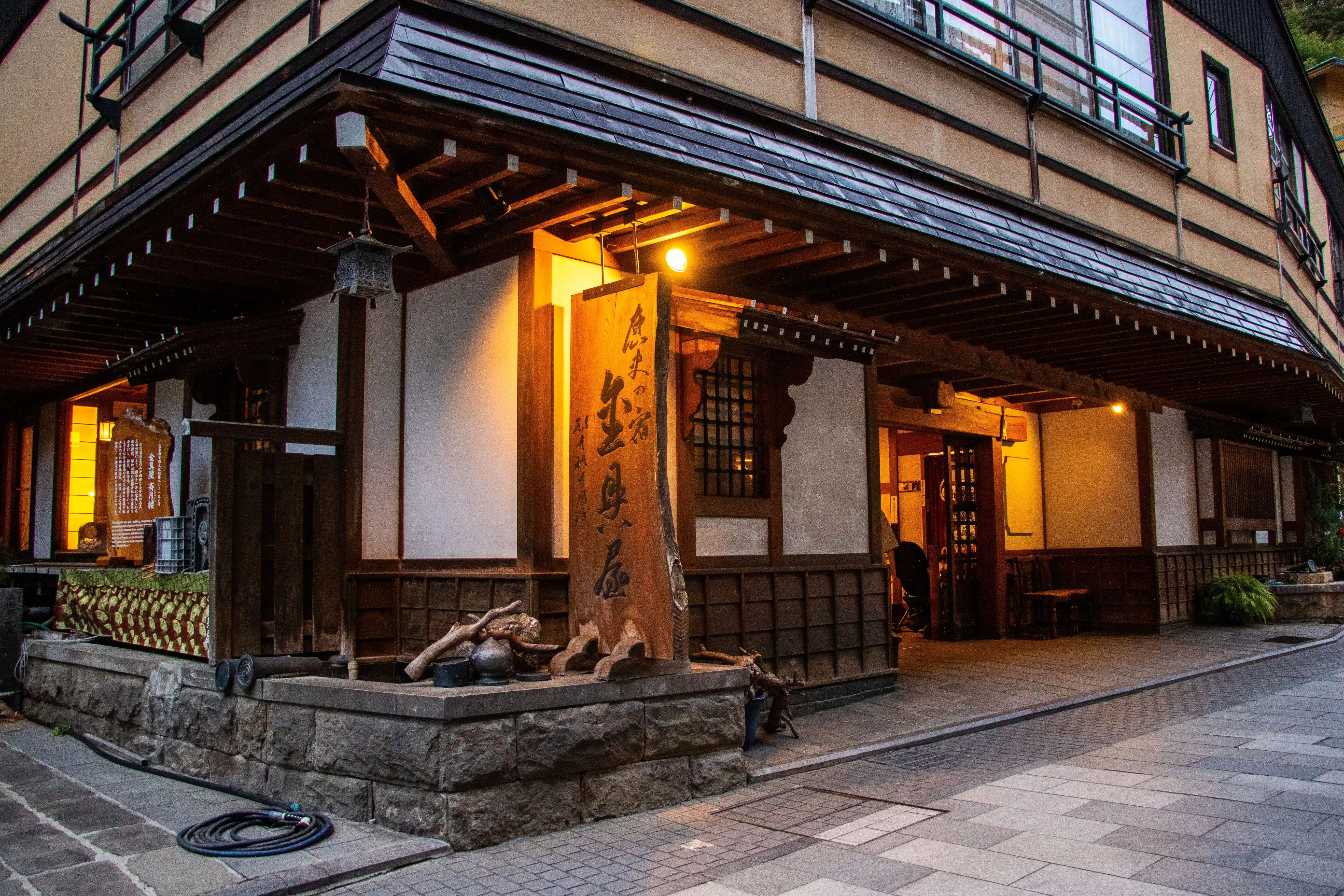
Shuttle service from Yudanaka Station is available after 3:00 p.m. For more details, please check by phone or visit the official website. (Reservations are required)

Around the ryokan, you’ll find popular attractions like Jigokudani Monkey Park and Shiga Kogen. Jigokudani Monkey Park is famous for offering close-up views of wild monkeys bathing in onsens during winter. These "snow monkeys" are beloved worldwide, especially when seen soaking in outdoor baths amid the snow. However, you can observe the monkeys' activities throughout the year, not just in winter.

Shiga Kogen is a highland area located in the heart of the Joshinetsu Kogen National Park. In the summer, visitors can enjoy trekking while taking in beautiful mountain views, and in the winter, various activities such as skiing are available. Surrounded by abundant natural beauty, Shiga Kogen is also designated as a UNESCO Eco Park.
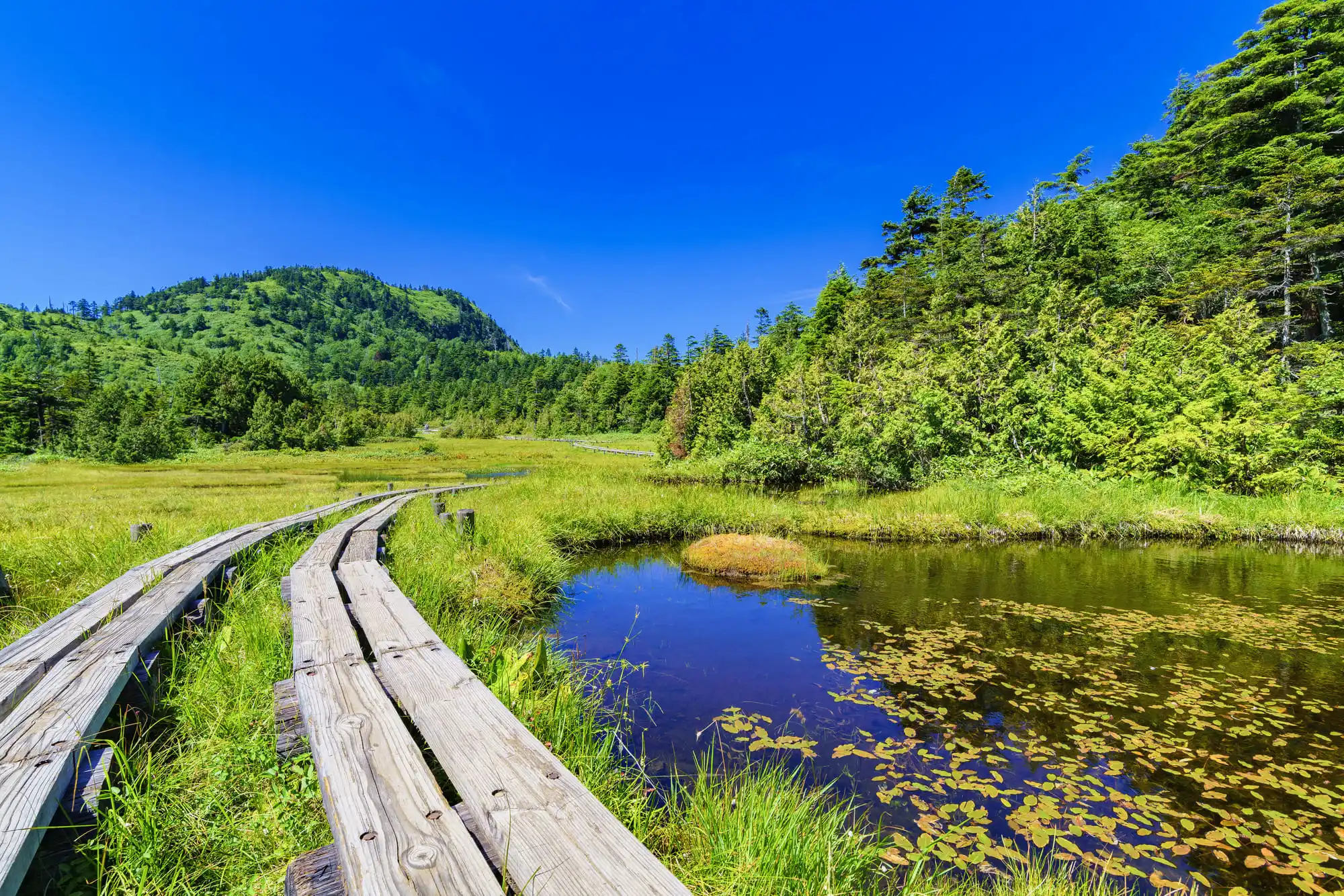
Attraction 1: Stay in a historic building
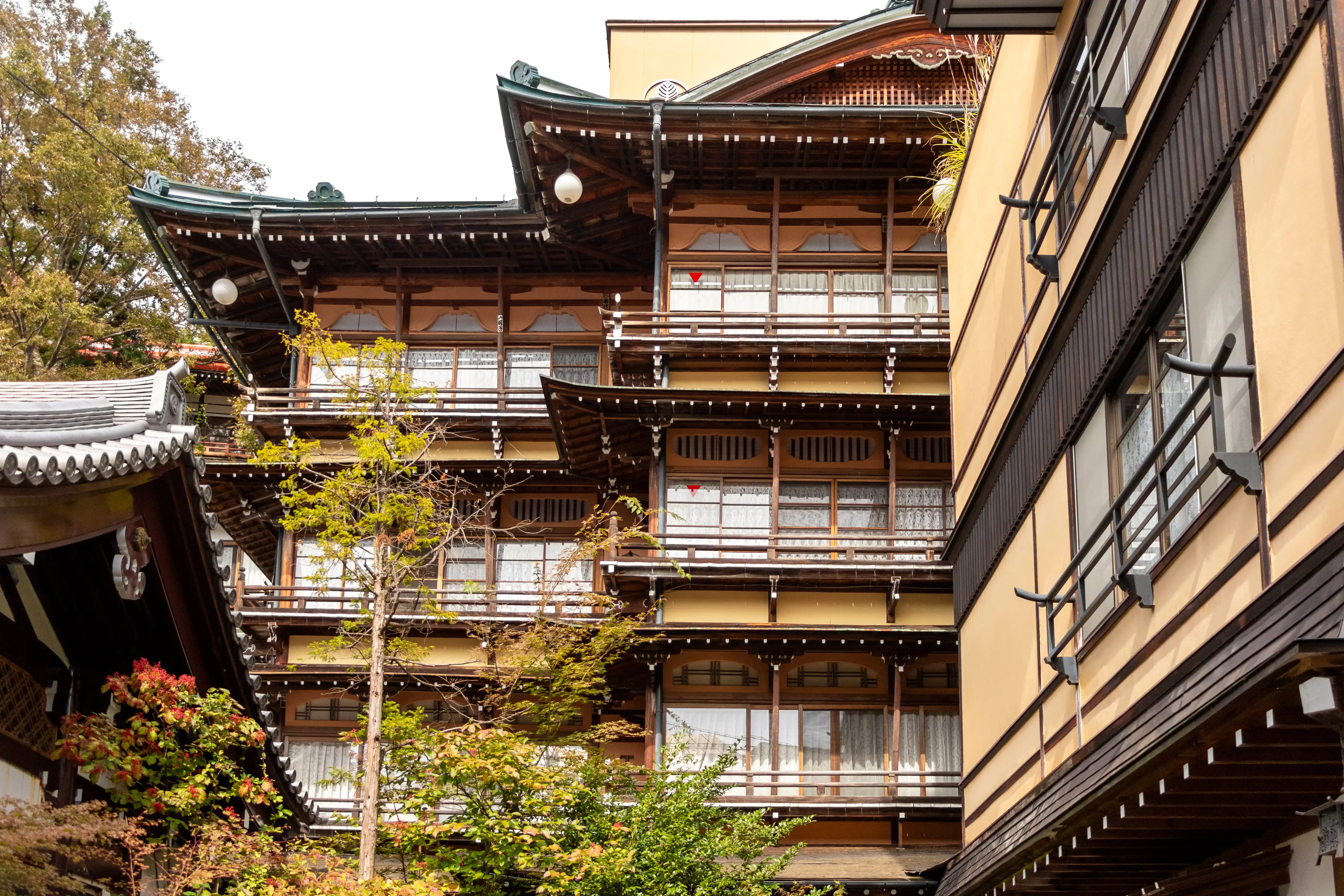
The name "Kanaguya" comes from the fact that before opening as an onsen ryokan, the establishment was a blacksmith shop, where they made metal fittings. In 1754, the area was affected by a landslide on the mountain behind the ryokan, and while rebuilding, onsen began to emerge from the grounds. This led the inn to shift its focus to the ryokan business in 1758.
One of the charms of Kanaguya is the opportunity to stay in a historically significant building with high artistic value. As soon as you step inside, it feels as though you've been transported back in time to the era when the building was constructed, offering a completely different world.
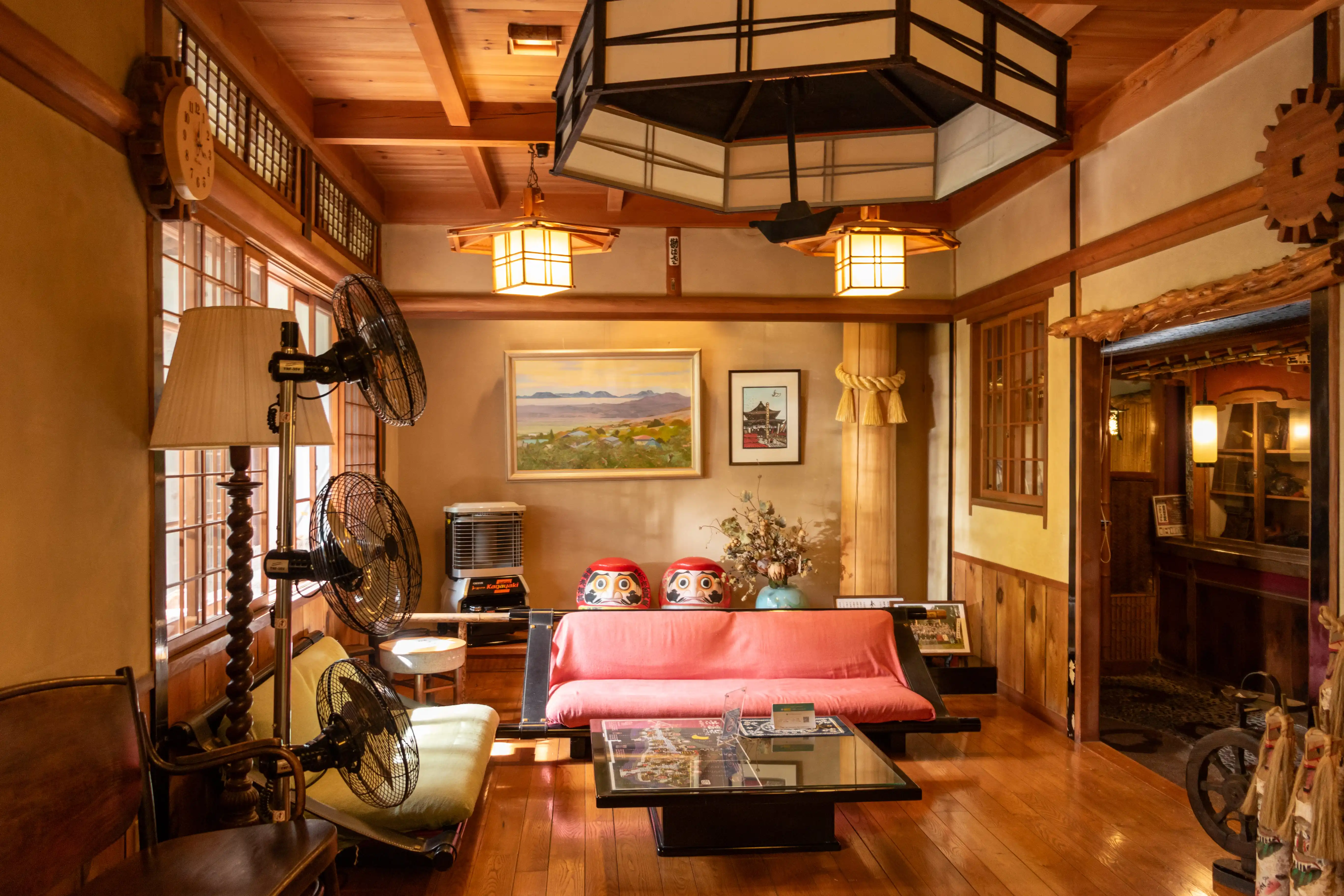
Inside the ryokan, you'll find old signs and antique art that were once used in the inn, as well as paintings displayed throughout. It creates a sense of being in an art museum rather than a traditional ryokan.
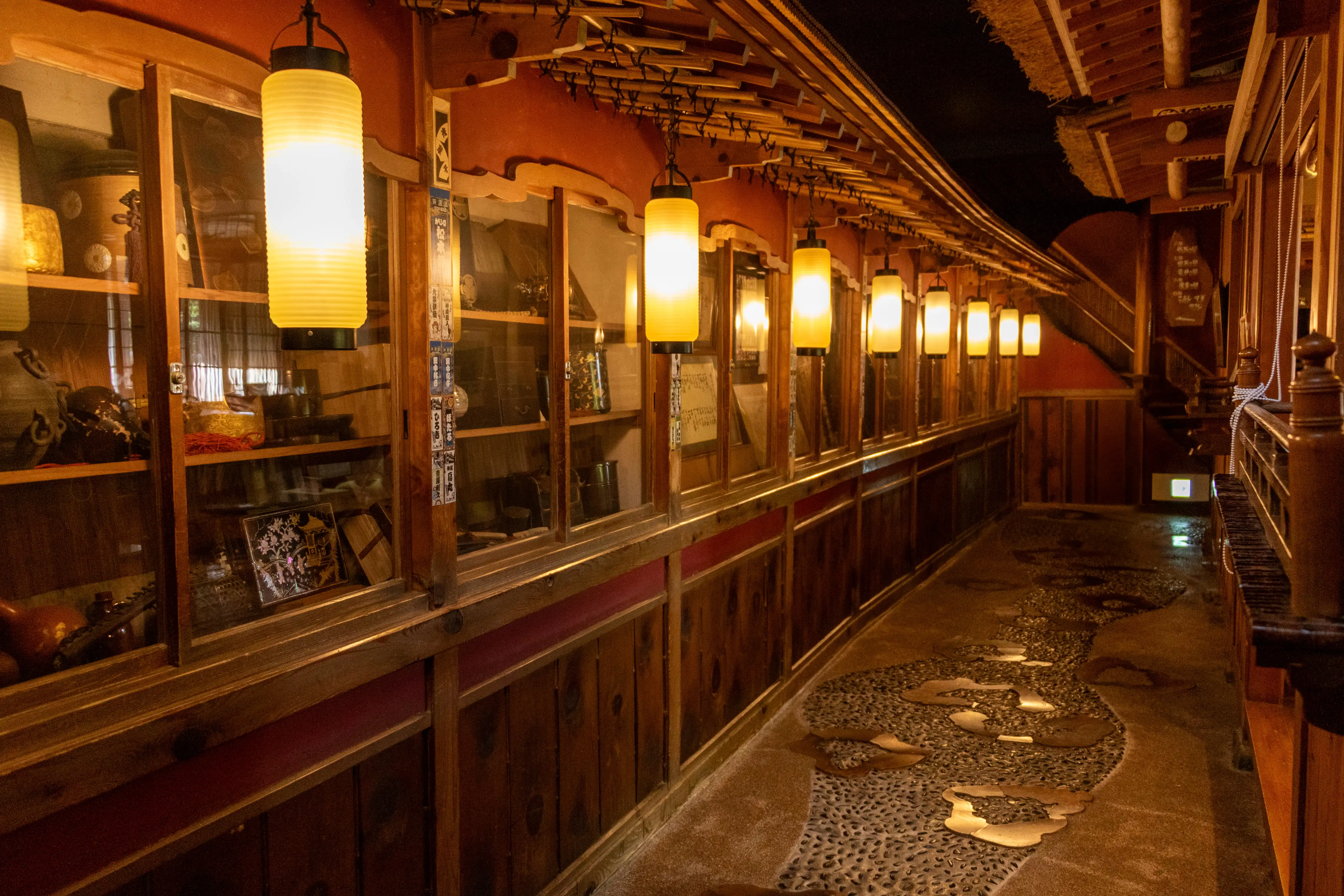
Among the buildings, the large hall and the Saigetsurou completed in 1936 are registered as Tangible Cultural Properties in 2003. The construction is a traditional Japanese architectural style, built with wooden joints without the use of nails. Guests can learn more about the building’s history and construction methods through a cultural property tour held every evening. The tour is conducted in Japanese, but for foreign guests, an exclusive English-language web video is also available.
The expansive 130-tatami mat large hall features a unique pseudo-Western architectural style with no supporting columns. By incorporating the truss structure, a Western architectural technique, the design blends Japanese and Western cultures, creating a distinct and captivating charm.
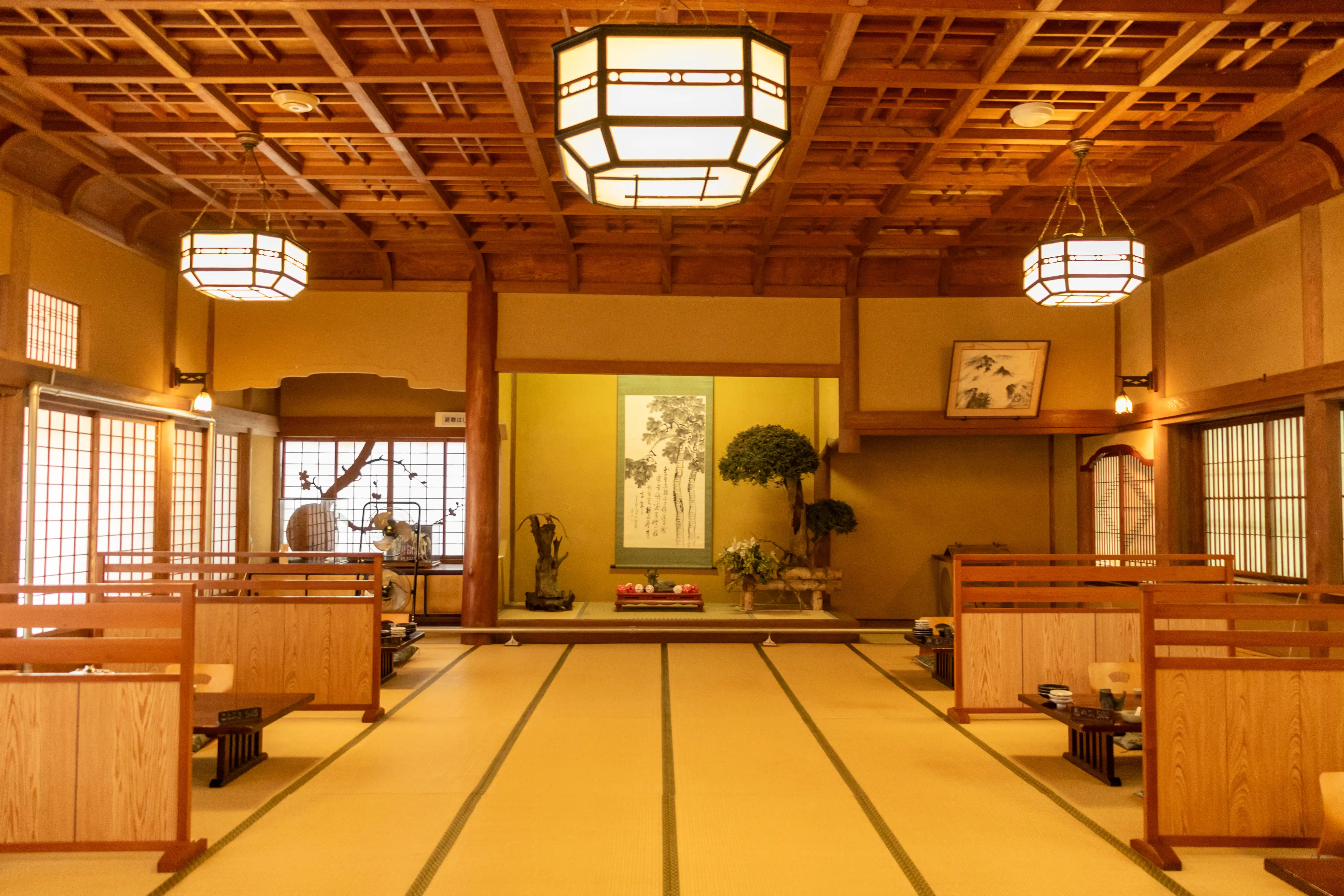
While it is typically a dining area, the large hall is also used as a venue for events such as music festivals and banquets.
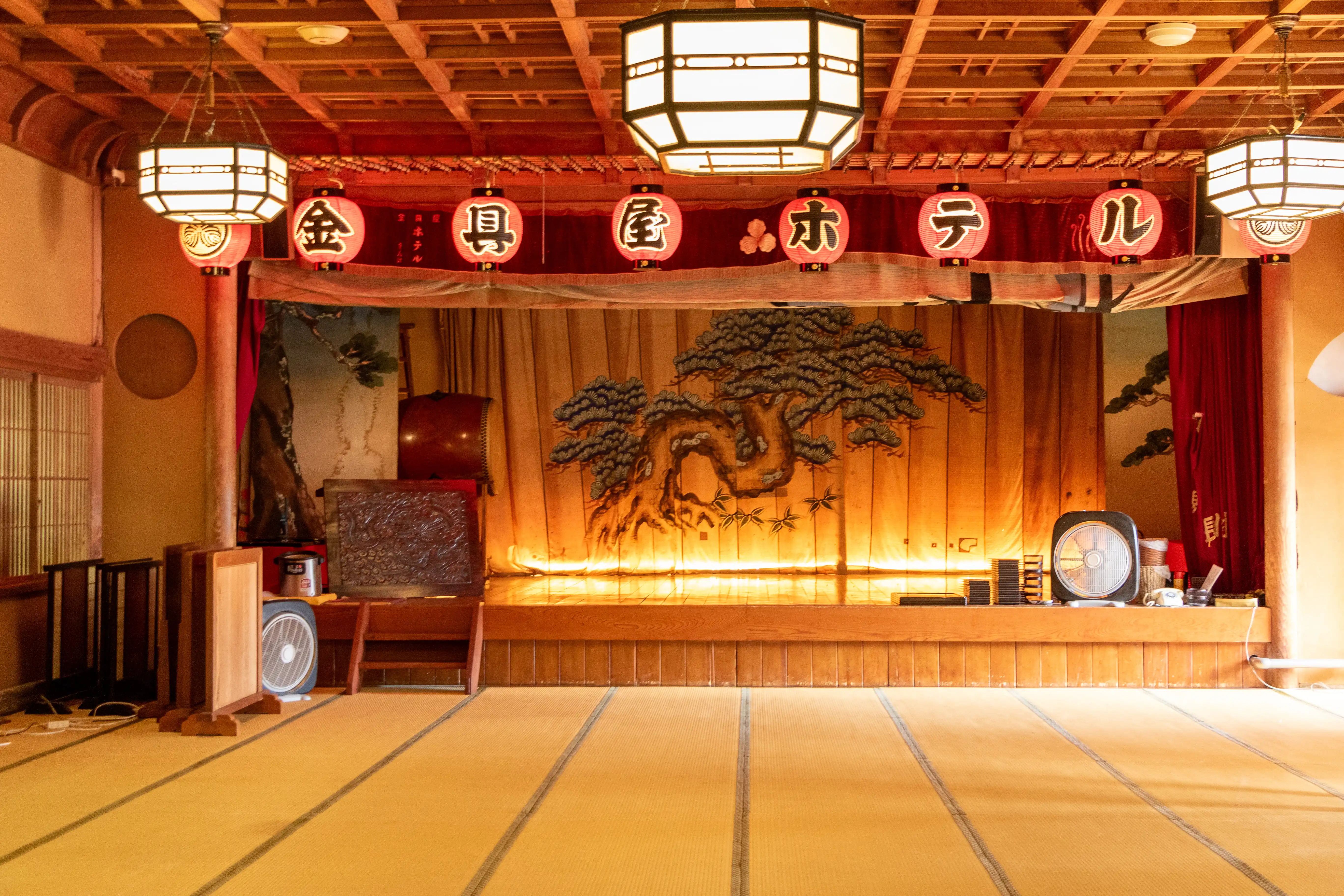
The four-story wooden Saigetsurou building showcases the advanced skills and creativity of artisans throughout. Each decoration, crafted by hand, creates a one-of-a-kind space that never fails to captivate guests.
On the landing of the staircase, there is a window shaped like Mount Fuji, illuminated by lighting that evokes the image of the moon. This space blends traditional Japanese culture with a subtle modern atmosphere.
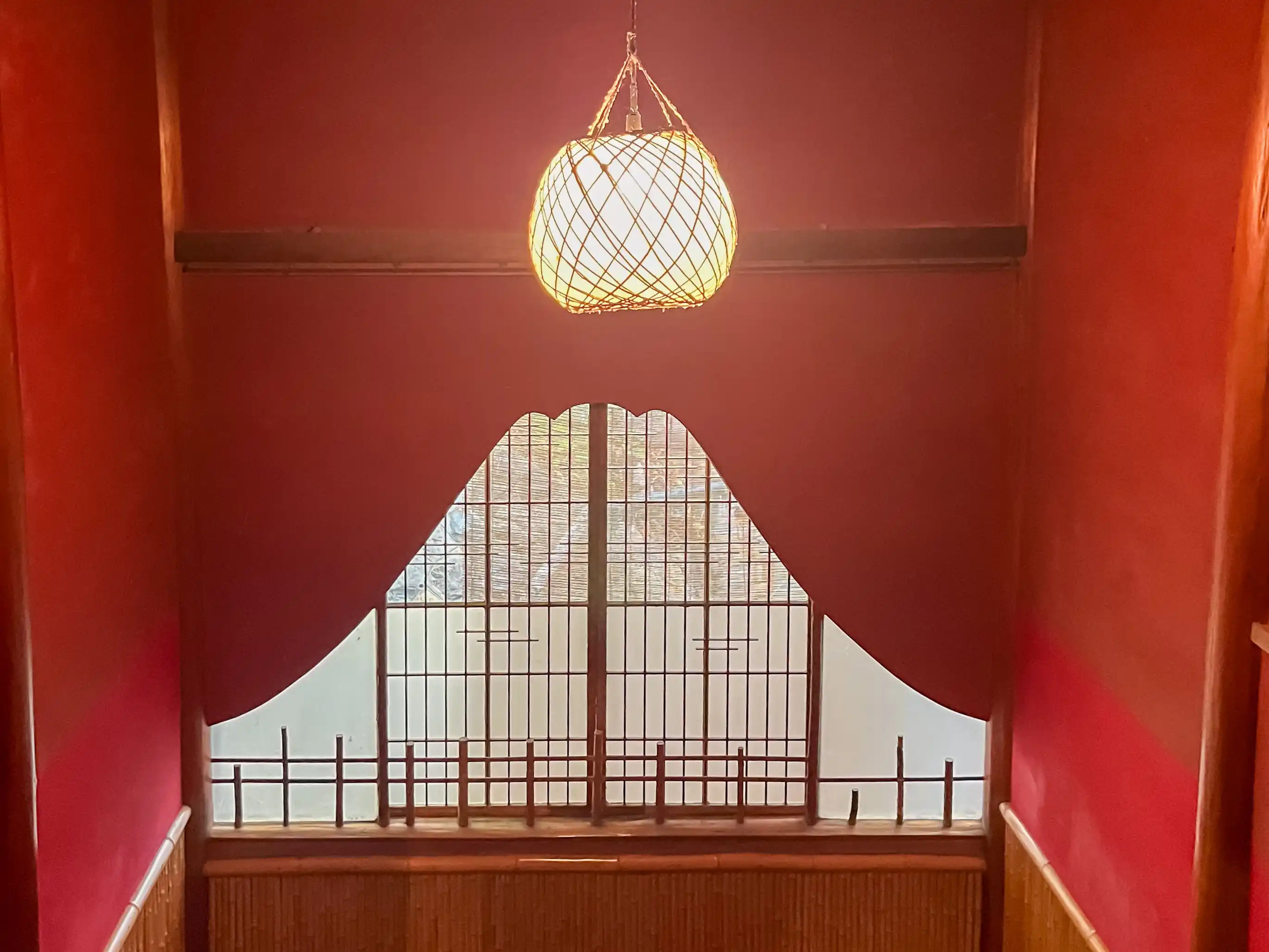
If you look closely at the decorations on the hallways and shoji, you’ll notice the clever incorporation of parts such as gears. These are made from reclaimed materials, salvaged from the dismantling of an old watermill, reflecting the craftsman's playful creativity.
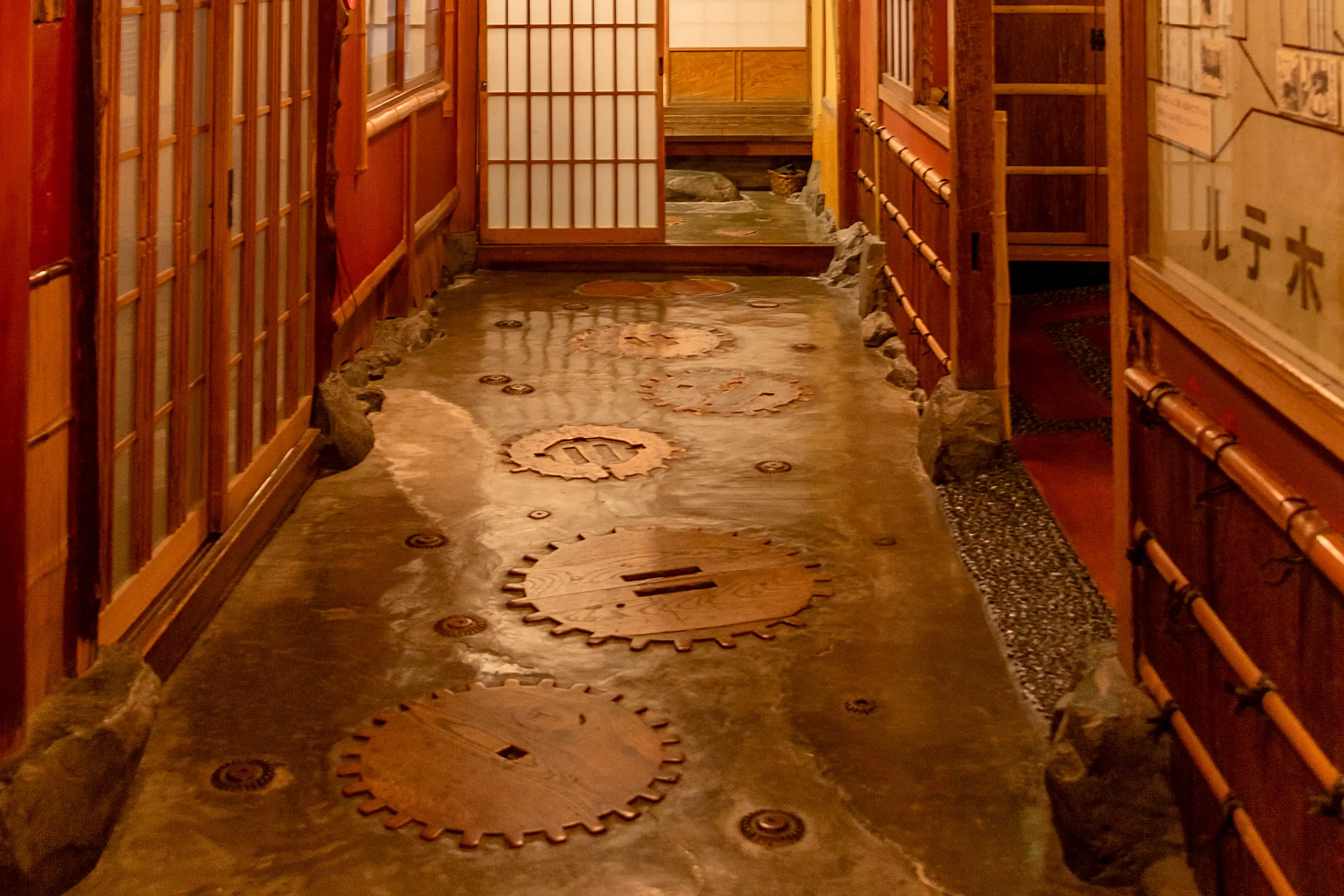
At night, Saigetsurou is illuminated, and its golden glow in the darkness creates a truly enchanting and mystical atmosphere.
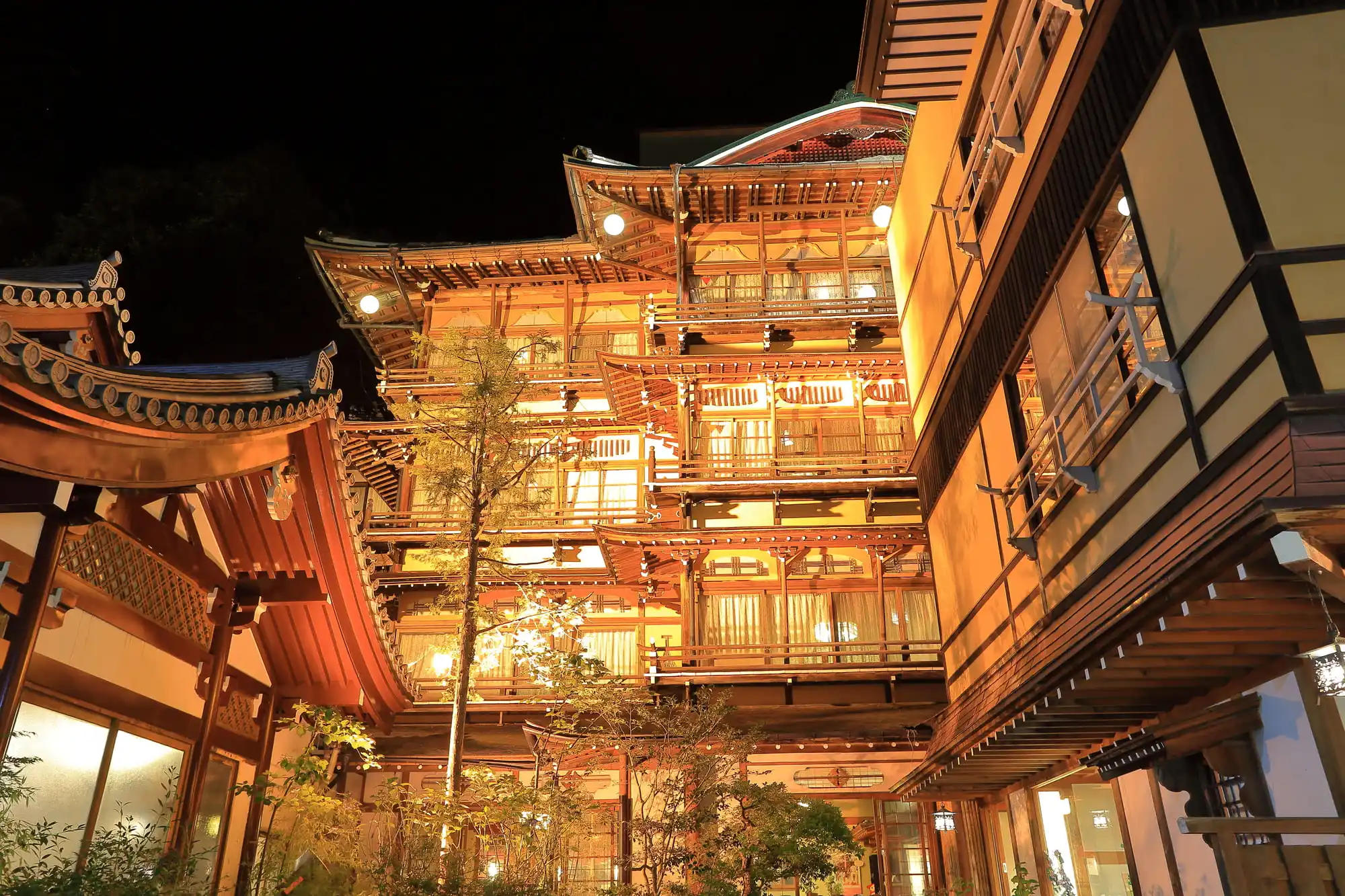
Attraction 2: A wide variety of 100% pure, flowing onsen with diverse mineral qualities
Kanaguya owns four private onsen sources and has the rights to shared spring water, giving it a total of five sources. All of the baths inside the ryokan are fed with 100% pure, flowing onsen water from these five sources. The spring water is volcanic, high-temperature water, and not only the large communal baths and private onsen but also the water from the taps and showers throughout the building is all onsen water.

The onsen water includes chloride springs, sulfate springs, and sulfur springs, all known for their skin-beautifying effects. Each bath has its own unique appearance, feel, and scent, allowing guests to enjoy a variety of onsen experiences all within one ryokan.
For those who want to learn more about the onsen, we recommend joining the onsen source tour. This tour is available exclusively to guests and is held in the morning. You can witness the onsen water bubbling up from the source and even touch the mineral crystals formed by the spring water.
(Note: The tour is conducted in Japanese only.)
Attraction 3: Three large public baths and five private baths
Kanaguya has three large public baths and five private baths. Among the large baths, Ryuzui Roten-buro is a separate male and female outdoor bath, while Roman-buro and Kamakura-buro operate on a gender-swapping system.
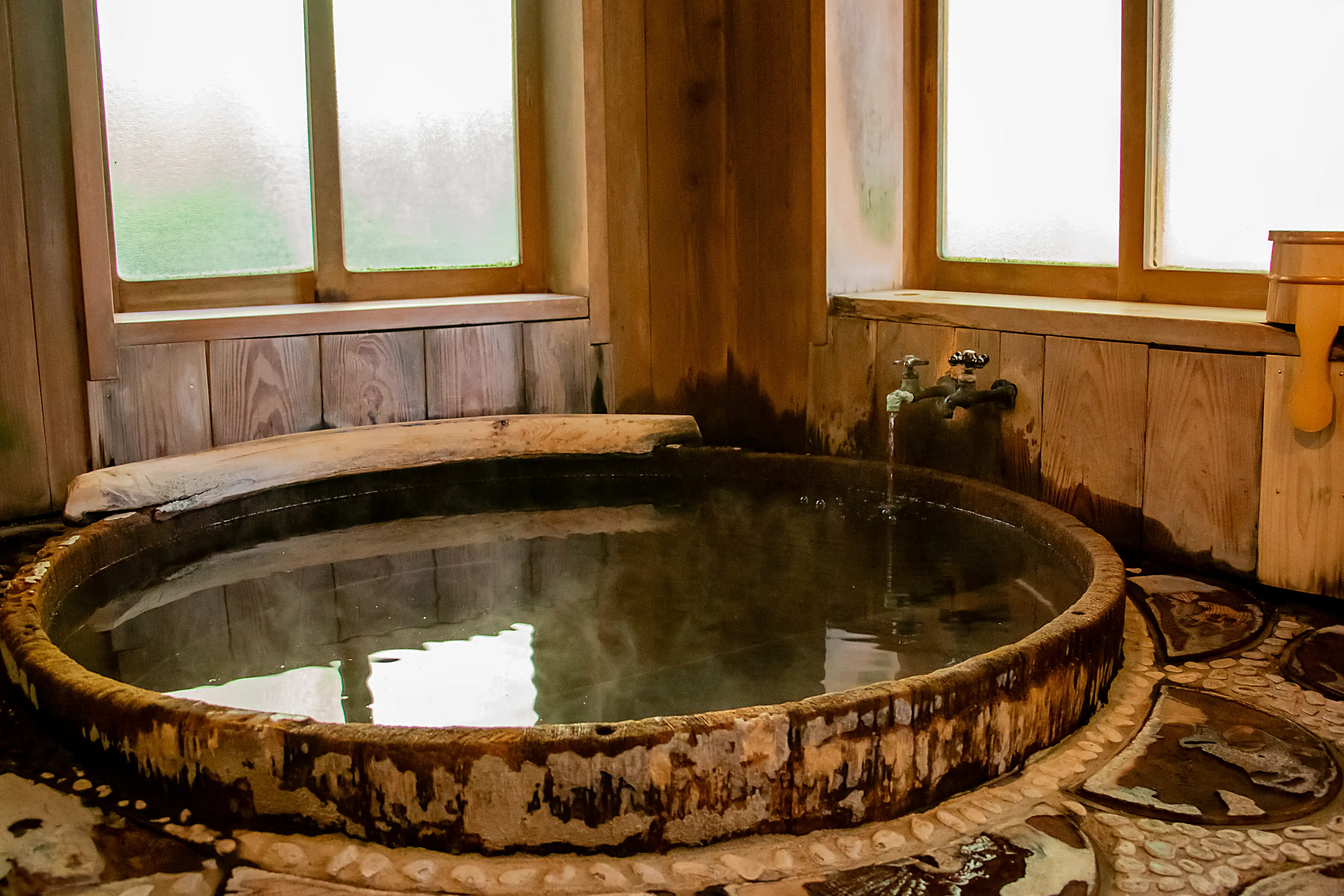
This time, we will introduce some of the most distinctive baths among the three large communal baths and five private onsen baths.
Public Baths
Ryuzui Roten-buro
Ryuzui Roten-buro is located on the rooftop of the Shimmei no Yakata and offers a spacious, open-air experience. While bathing, guests can enjoy the stunning views of the surrounding mountains, enhancing the feeling of relaxation and freedom.
The onsen water is a chloride spring that contains sulfur components. However, since it is outdoors, there is almost no sulfur smell. After bathing, the salt content in the water forms a thin layer on the skin, preventing moisture from evaporating. As a result, it is known as a gentle "beauty bath" that is kind to the skin.
There are separate outdoor baths for men and women, each with its own unique charm and atmosphere.
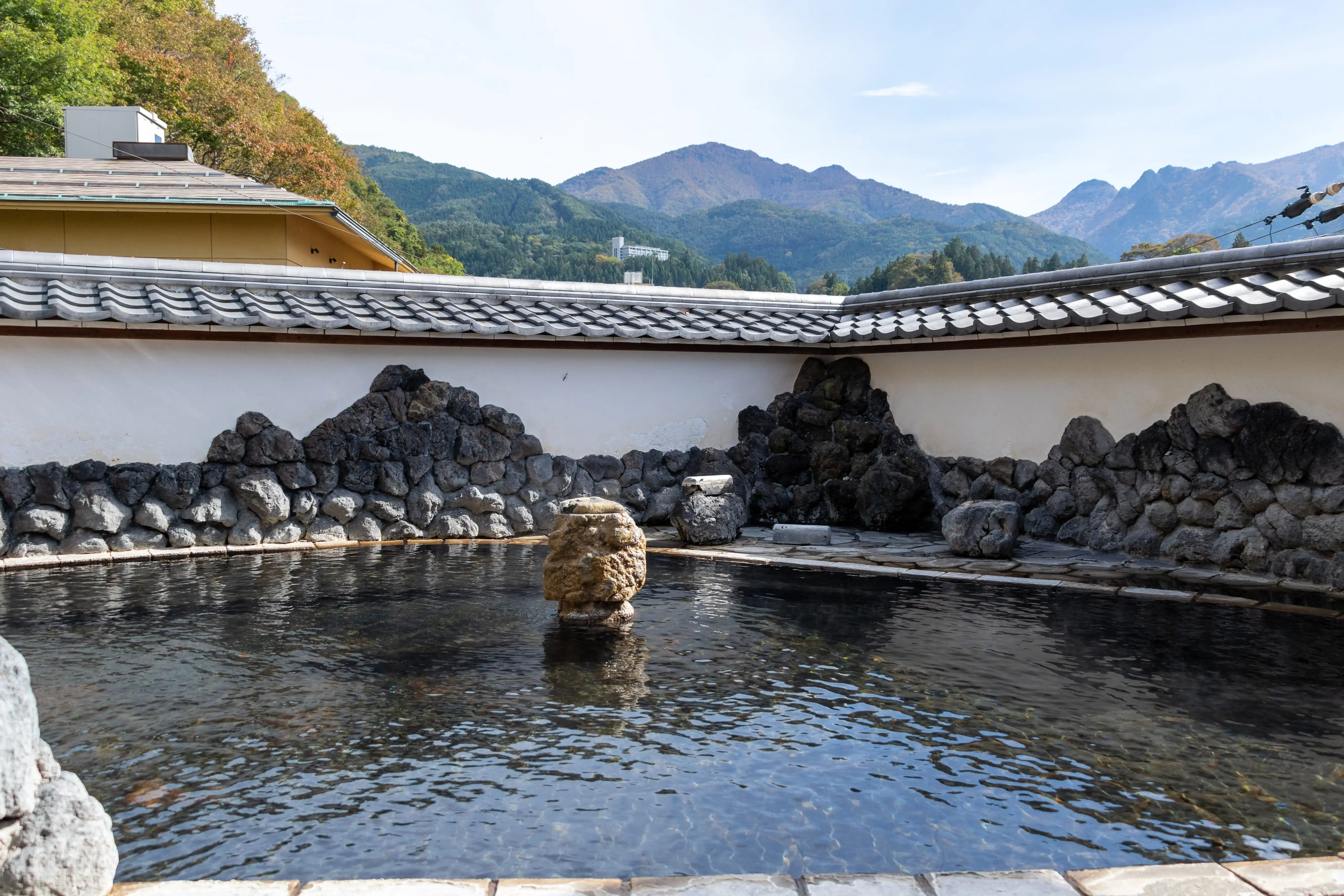
The outdoor baths are made of Asama stone, which is a type of lava rock from Mount Asama. Asama stone is known for its excellent drainage properties, and due to current legal restrictions on its extraction, it has become a rare and valuable material.
Roman-buro
Roman-buro is fed by the oldest onsen source at Kanaguya, offering a mineral-rich spring with high iron content, which is beneficial for the skin. The water has a slightly murky appearance, and it was once known as the "Mud Bath."
The bath's interior blends Western cultural elements, featuring stained glass windows and a bathtub designed to resemble a Roman fountain, creating a unique atmosphere that combines both Japanese and Western characteristics.
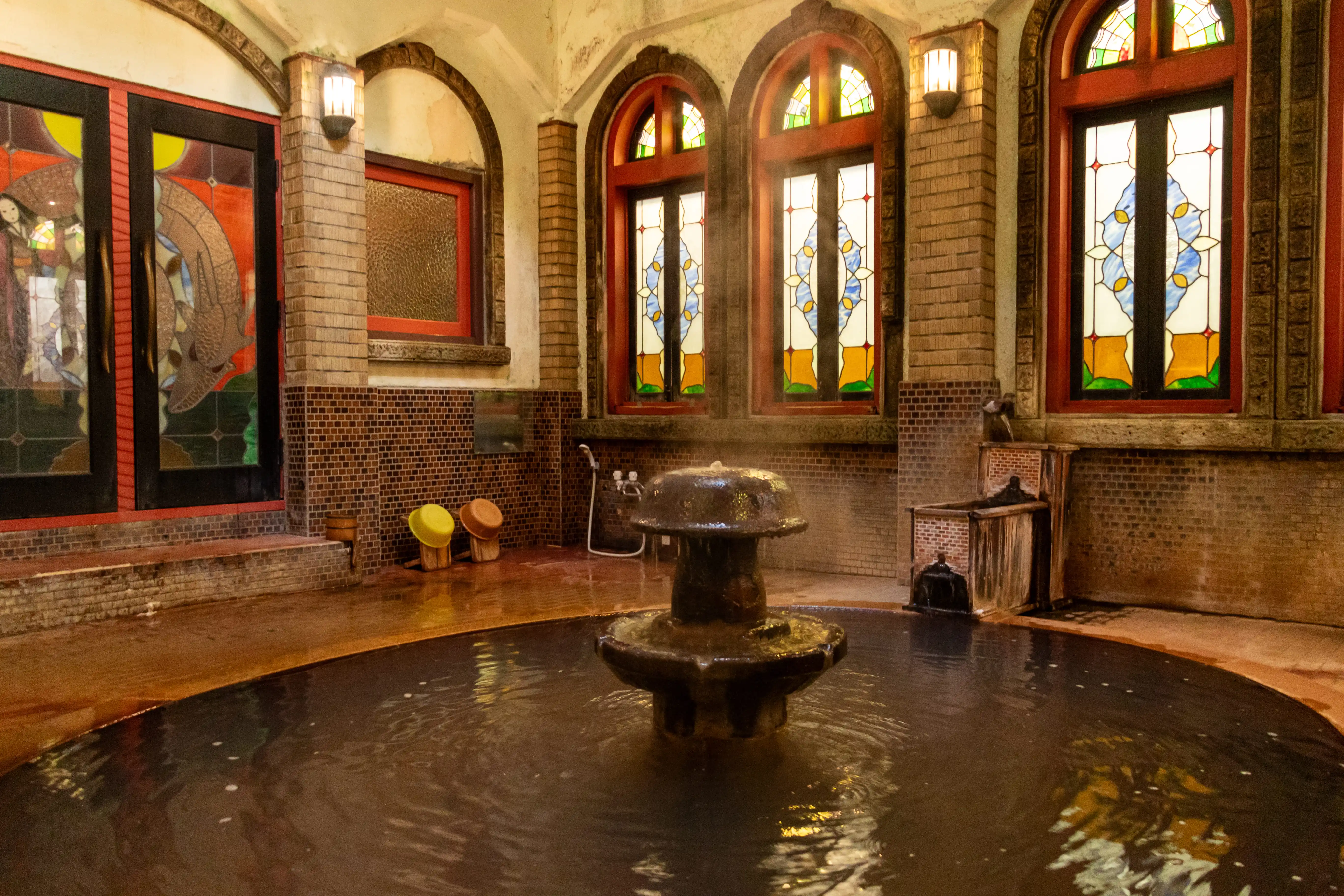
Kamakura-buro
Kamakura-buro features water with distinctive white "yubana", which are mineral deposits that float in the water. The spring water is a blend of two sources from the shared onsen of Shibu Onsen. The bath's design is inspired by Kamakura period architecture, and the shape of the bathtub is a charming gourd shape, adding to the bath's unique and inviting atmosphere.
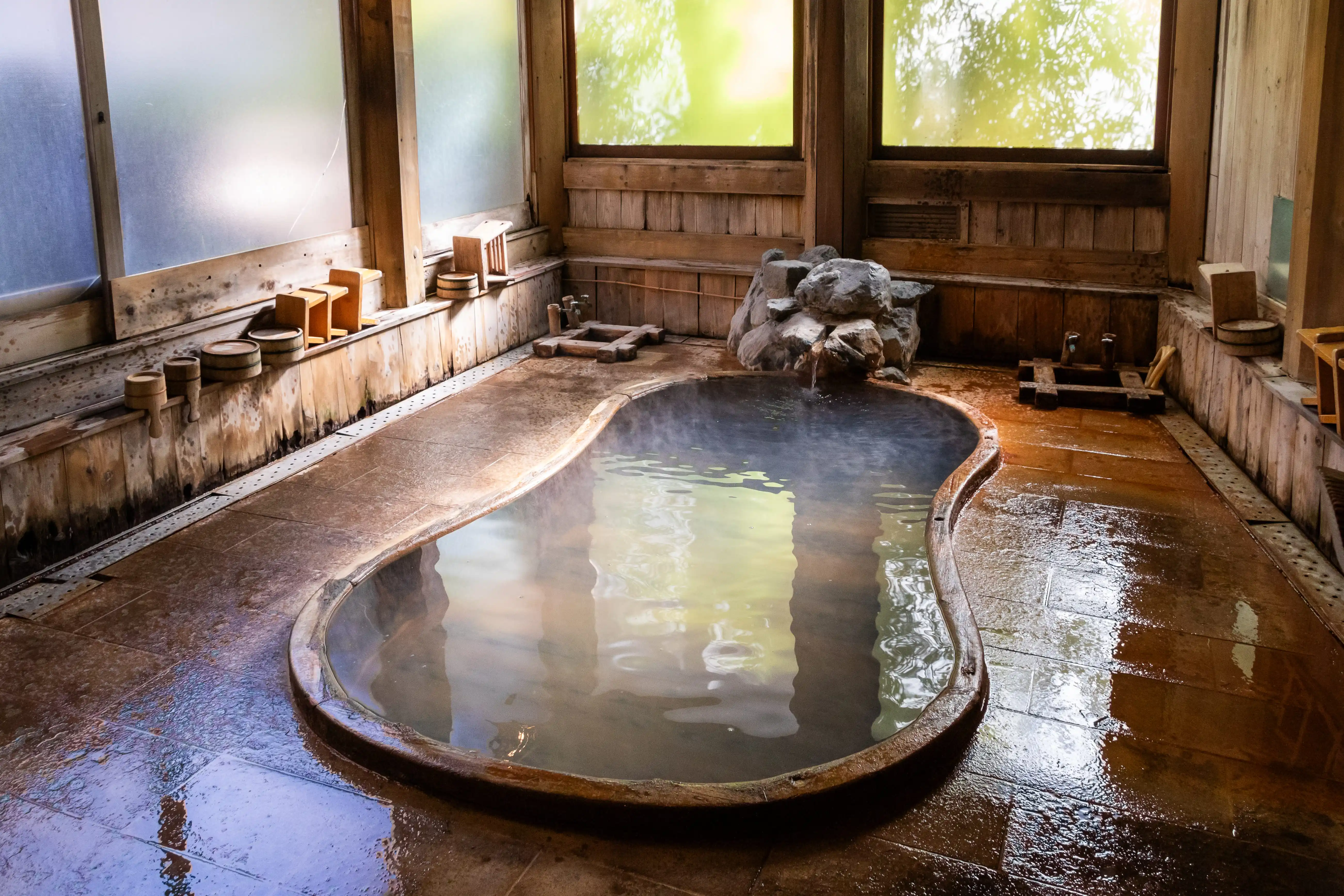
Private Baths
Saigetsu no yu
The largest of the private baths was renovated in 2018, yet it retains the original boat-shaped bathtub. The walls are adorned with a tile mural of Mount Fuji, creating a picturesque scene. This bath exudes a traditional Japanese atmosphere, making guests feel as though they've stepped into the world of ukiyo-e, immersed in the beauty of Japan's cultural heritage.
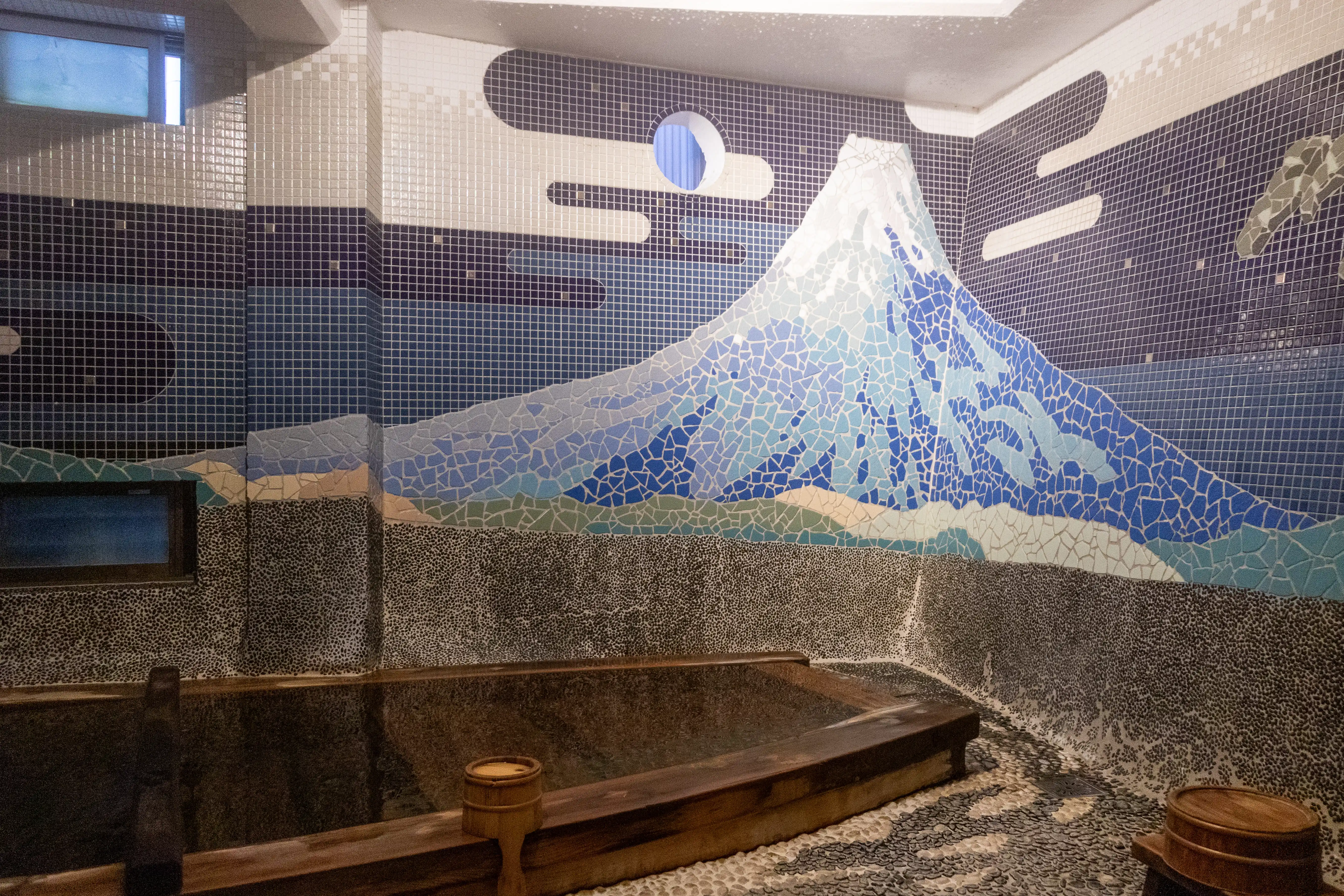
Gankutsu no yu
This private bath is carved into the mountainside, with natural rocks stacked from the walls all the way up to the ceiling, creating an authentic cave-like experience. The setting offers a unique, raw connection with nature, allowing guests to enjoy the feeling of bathing in a real cave.

Attraction 4: The Nine Onsen of Shibu Onsen Town
If you're staying in Shibu Onsen, one experience you definitely shouldn't miss is the onsen-hopping tour through the nine public baths in the town. The entrance to all nine baths is free, but there’s a rule that only guests staying at Shibu Onsen can access eight of them, with the exception of one. To visit these baths, you borrow the keys to the public baths from your ryokan. At Kanaguya, they provide their guests with keys to the public baths for their exclusive use.
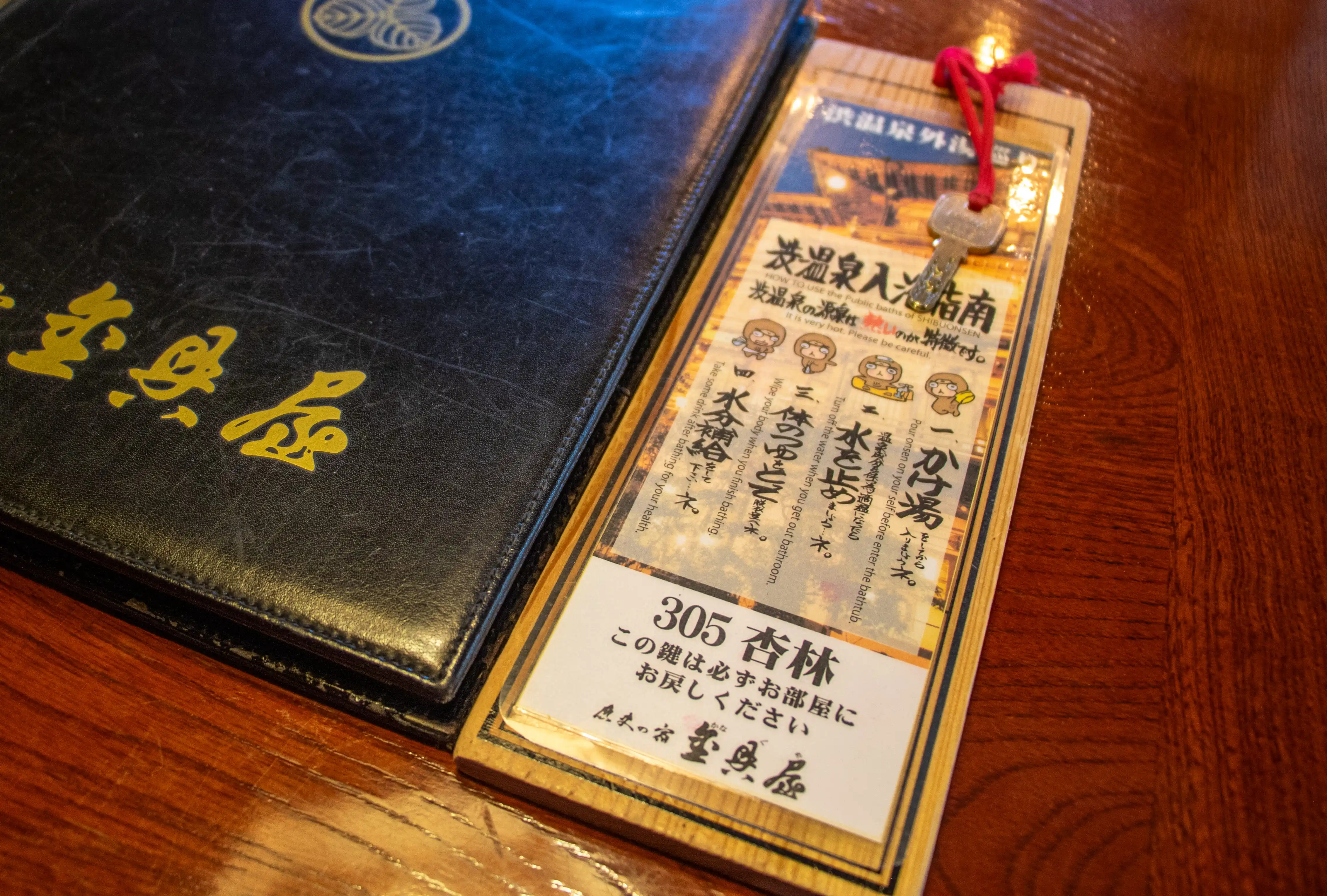
The way to enjoy the onsen-hopping tour is to first purchase a tenugui (a traditional hand towel) from your accommodation or local souvenir shop. Then, you visit the nine public baths in order from 1 to 9, collecting stamps at each bath as you go.

The first bath, known as "Hatsu-yu" (the first bath of the day), is located almost in the center of the onsen town and serves as the starting point for the nine public bath tour. Each of the public baths has a different spring quality, offering a variety of therapeutic benefits.
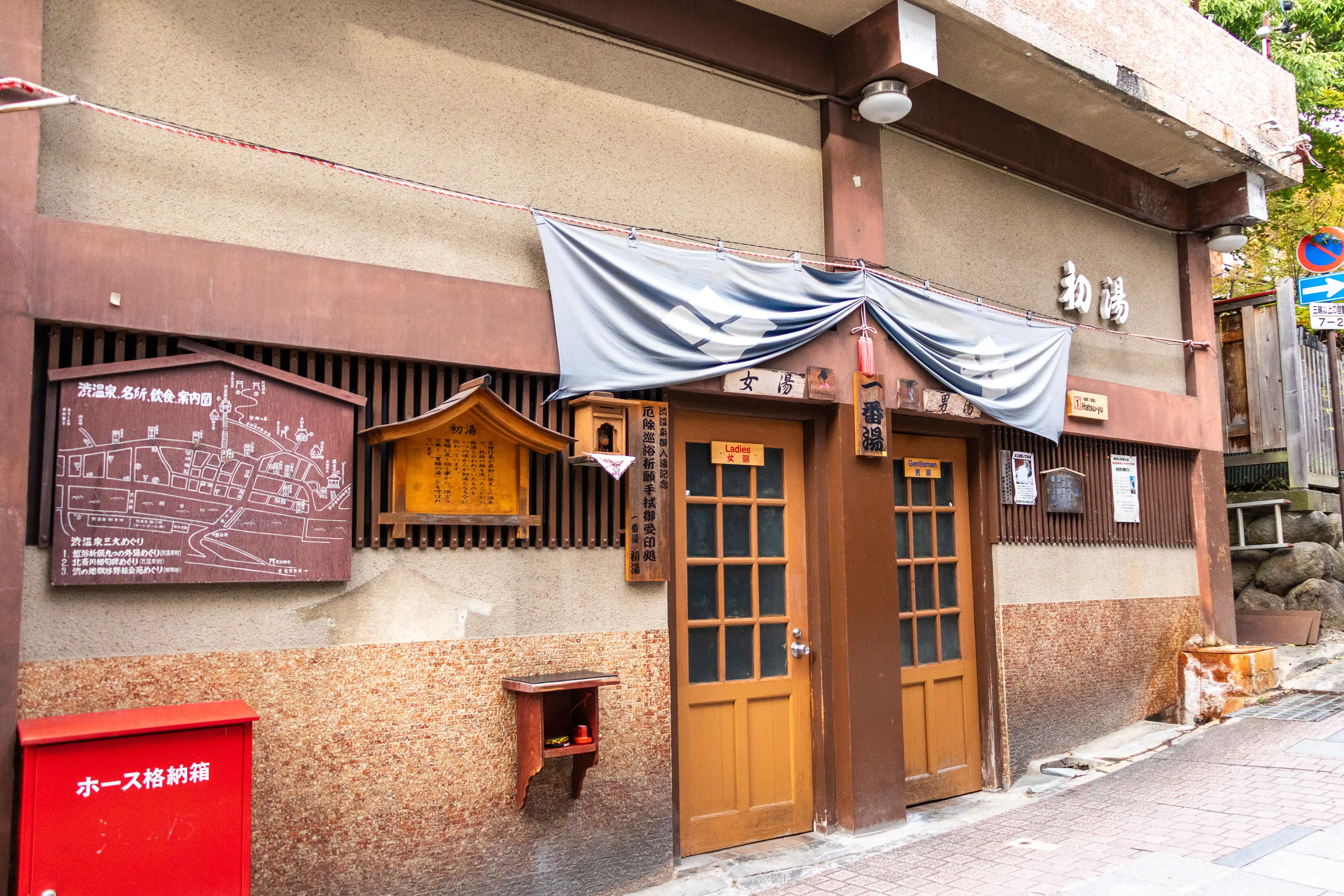
As you progress through the baths in order, the final public bath is Shibu O-yu. Shibu O-yu is the only one of the nine baths where non-guests are also allowed to bathe, making it a unique spot to conclude your onsen-hopping tour.

Shibu O-yu has a foot bath on its rooftop, so if you don’t have time for the full onsen-hopping tour, you can still enjoy this relaxing experience. It’s a great way to unwind and enjoy the atmosphere of the onsen town, even if you’re short on time.
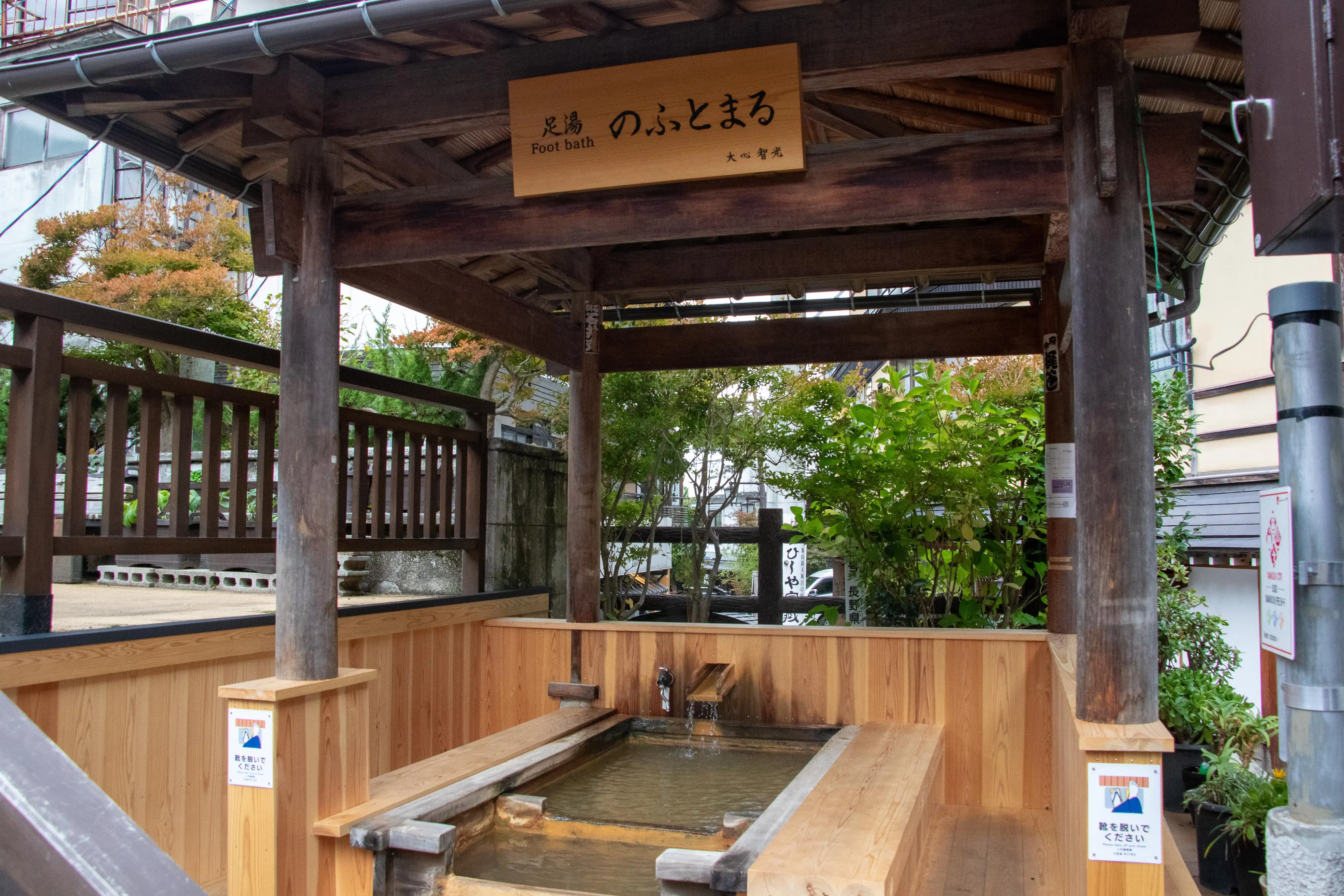
Once you’ve visited all nine baths, it is said that your wishes will be granted if you visit Shibu Kōyaku-shi, located in front of Shibu O-yu, and receive a goshuin (a temple stamp). It is believed that by offering a prayer after completing the onsen tour, you will receive blessings for warding off misfortune, ensuring a safe childbirth and good health for children, as well as longevity.
At Kanaguya, for guests who wish to take their time with the onsen-hopping tour, they offer set meal options in addition to the regular course menus. These set meals are designed to be completed in a shorter amount of time, allowing you to make the most of your bath-hopping experience. If you're planning to explore the public baths, be sure to check out this option.
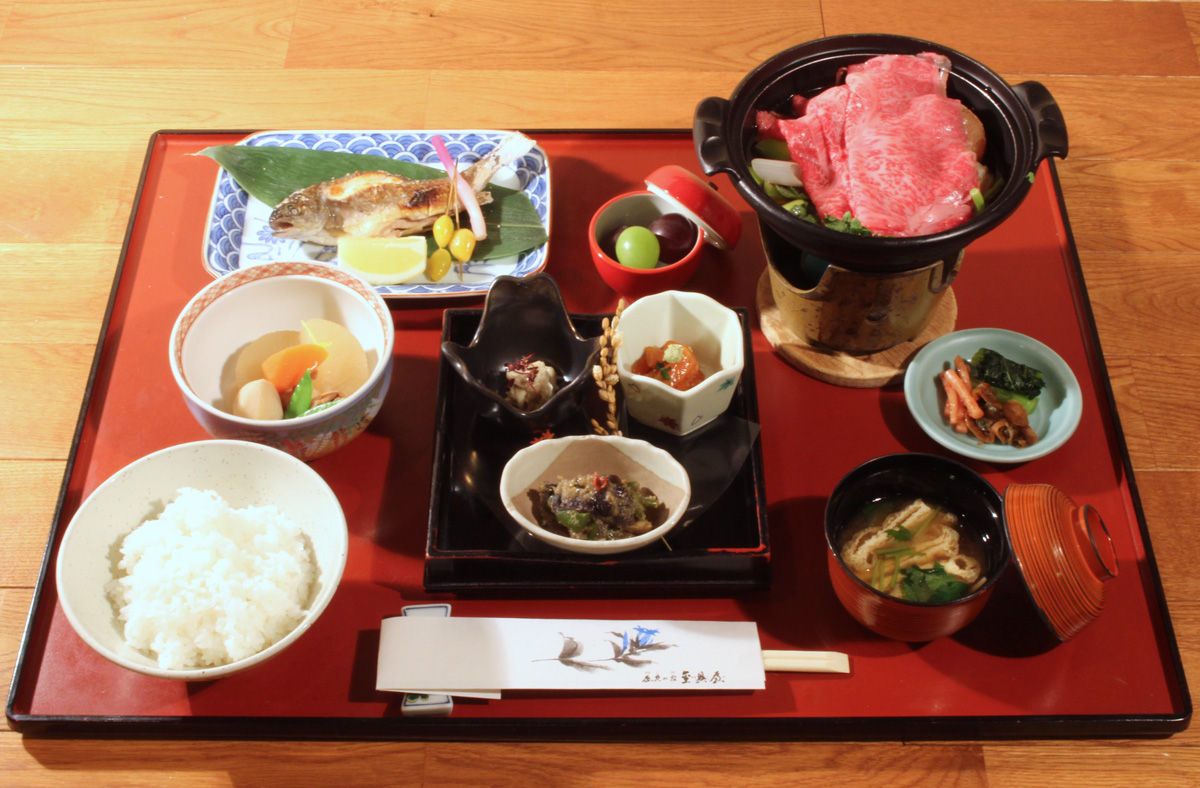
<Quoted from the official Kanaguya website>
Attraction 5: Traditional Japanese Rooms with Different Eras and Styles
The guest rooms at Kanaguya are unique in that they were built during different periods, each reflecting a variety of interior design styles. From the Meiji era to the Showa era, craftsmen of the time incorporated the trends of each era into their work. It’s rare to find so many rooms that allow you to experience the different eras, making this a special feature of a ryokan with such a long history.

The rooms are furnished with tatami mats, where guests sleep on futons, offering a traditional Japanese experience. This style of sleeping, which predates Japan's Westernization, allows you to immerse yourself in the authentic cultural atmosphere of Japan.
The rooms at Kanaguya are broadly categorized into three types: the wooden special suites, spacious Japanese-style rooms, and standard Japanese rooms. The special suites are representative of Kanaguya’s offerings, featuring traditional Japanese architecture crafted by skilled carpenters who specialized in temple construction. These rooms are spacious and can accommodate larger groups, providing a luxurious experience that only a ryokan housed in a historic building like Kanaguya can offer.
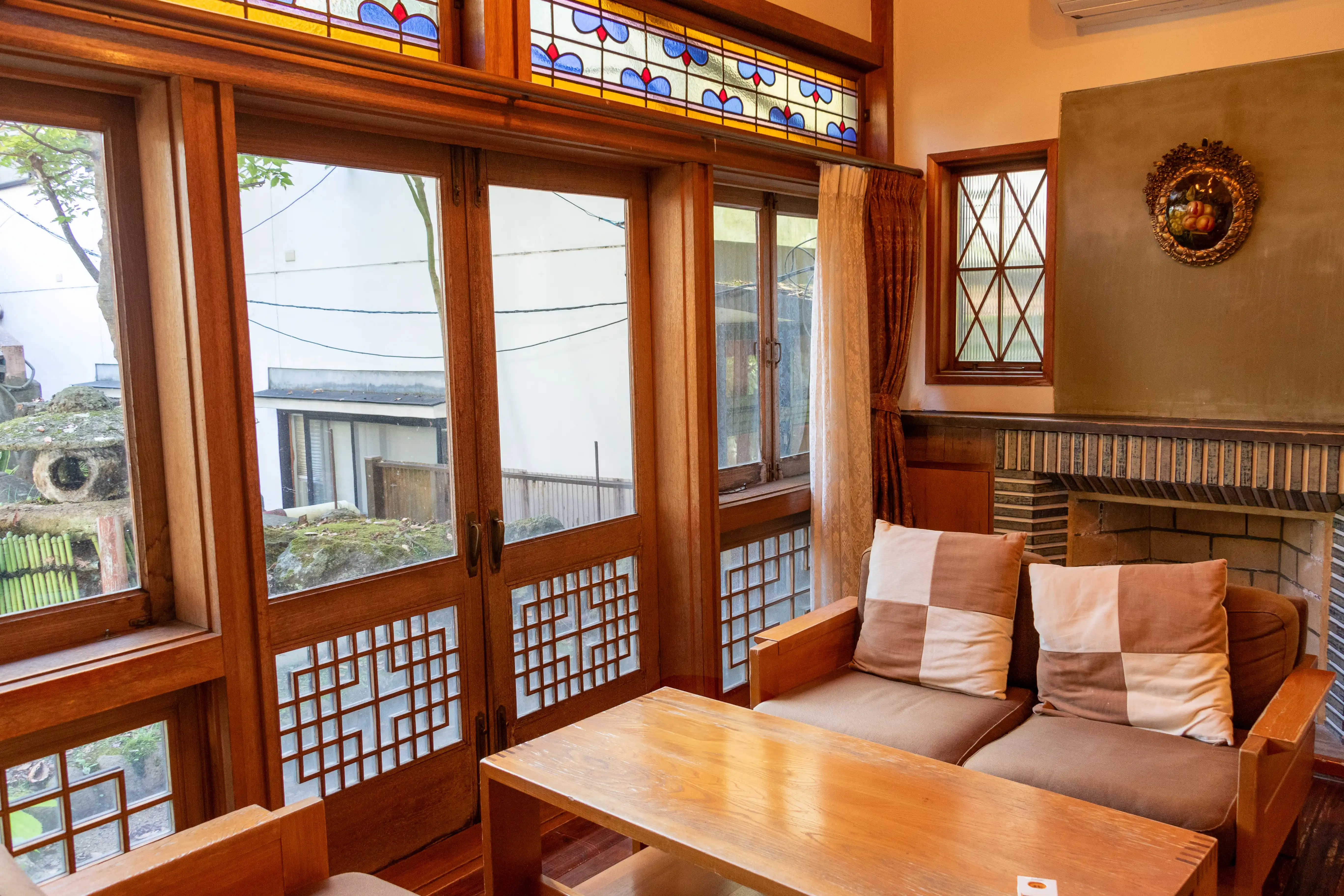
The spacious Japanese-style rooms are thoughtfully designed with attention to detail, offering a unique and refined atmosphere. The standard Japanese rooms, while simpler in design, still reflect the craftsmanship of skilled artisans who have carefully selected materials and paid close attention to every detail, allowing guests to experience an authentic and high-quality traditional Japanese room.
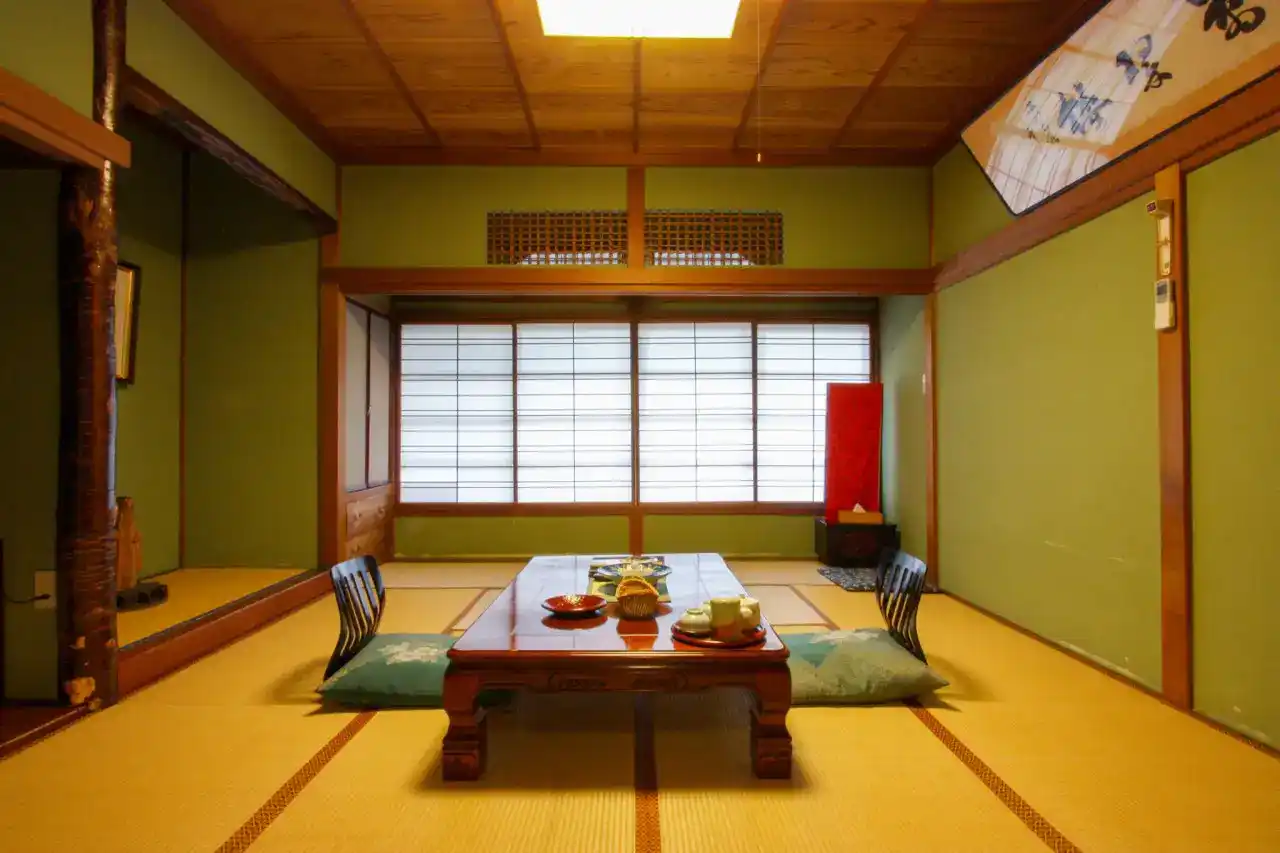
<Quoted from the official Kanaguya website>
The guest rooms with natural hot spring baths feature faucets that provide direct access to the spring water. You can enjoy the onsen at any time, as much as you like, in the privacy of your own room without worrying about others.
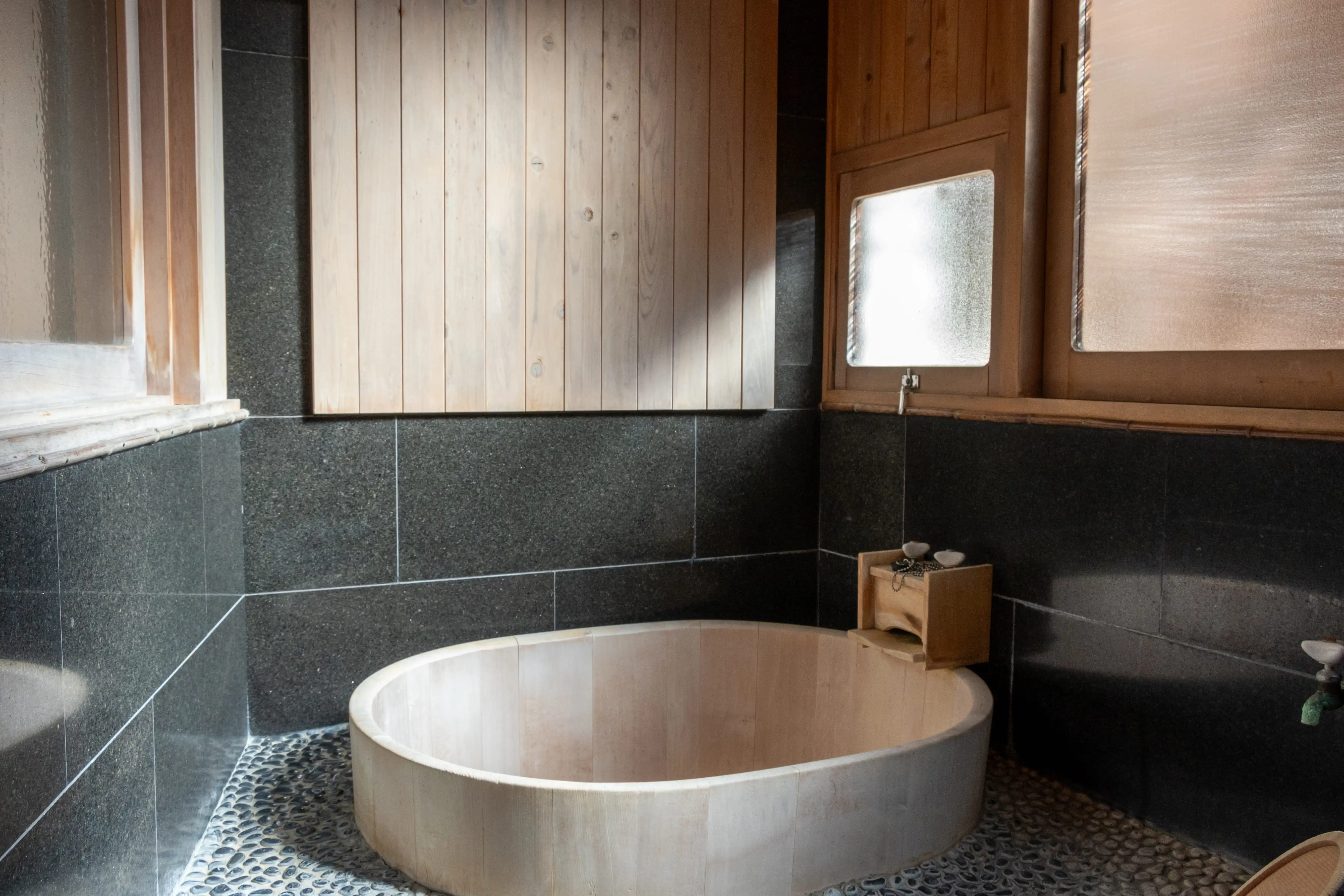
Attraction 6: Japan's Furozen - A Meal Focused on Health
Nagano Prefecture is one of the areas in Japan known for having a high number of people who live long lives. The reason for this may lie in the blessings of the many hot springs found in the region, as well as its unique food culture. At Kanaguya, they offer Japan’s Furozen, a meal that highlights local ingredients and food culture, designed to promote health and longevity.
The dinner menu features simple, rustic dishes that allow you to enjoy the flavors of Shinshu, including "Shibu no Jibu-ni" made with locally sourced chicken, sashimi made with Shinshu salmon, and various mushroom dishes. For those interested, an English guide is available to explain how to enjoy traditional Japanese dishes such as "Dobin Mushi" (steamed broth in a teapot), making it easy for foreign guests to enjoy with confidence.
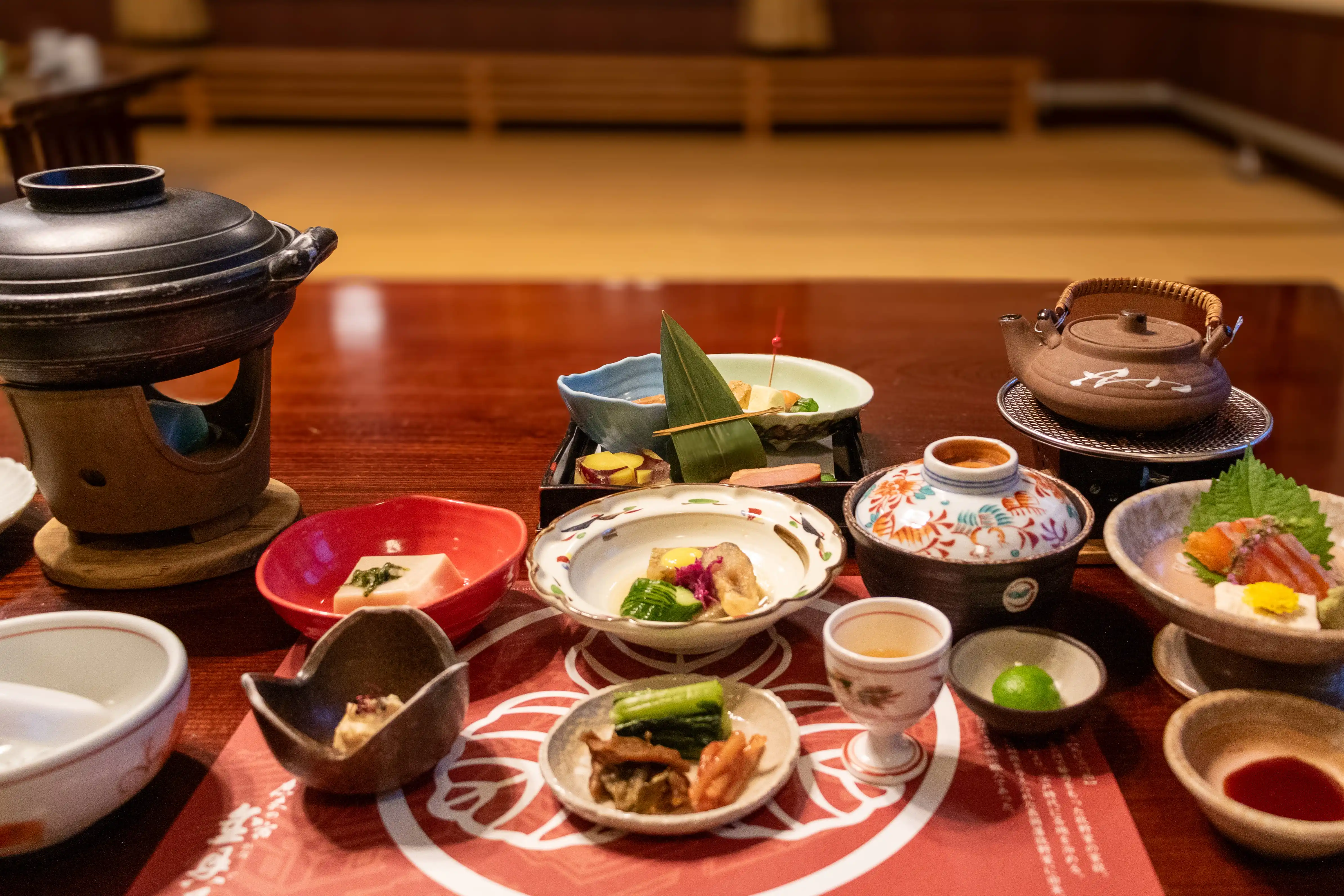
The breakfast menu features "Mugi Toro Gohan," a healthy Japanese meal consisting of barley rice topped with grated yam. In Japan, it is a common practice to eat grated yam over rice. At Kanaguya, this health-boosting "Mugi Toro" has been served as breakfast for over 20 years.
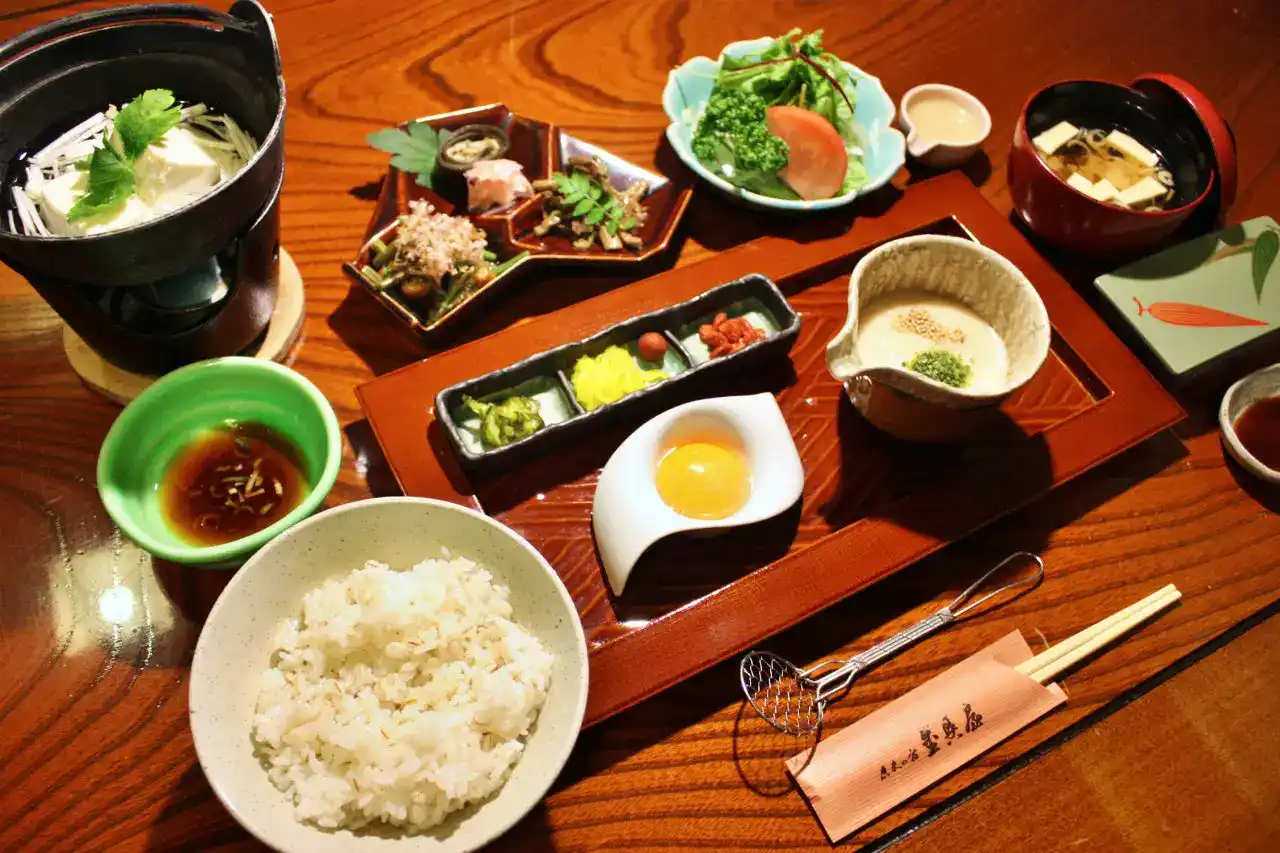
<Quoted from the official Kanaguya website>
Both the dinner and breakfast offer hearty Japanese meals, providing a highly satisfying dining experience with abundant portions.
Summary
Kangeya, founded in 1758, is a long-established ryokan that has been designated as a Registered Tangible Cultural Property. The luxurious and nostalgic atmosphere of the building is said to have inspired Studio Ghibli's film Spirited Away, offering a unique space where guests can experience traditional Japanese culture firsthand.
Kangeya is a ryokan where you can enjoy a variety of unique onsen, making it a dream destination for onsen enthusiasts and connoisseurs. In addition to experiencing the local onsen culture through the charming onsen town's public baths, you can also enjoy leisurely strolls and hiking in the lush natural surroundings. The ryokan offers a guide for guests to learn about its history and how to fully enjoy the onsen, providing an immersive experience into the deep world of onsen culture.
For those who want to feel the profound history of the onsen and are in search of an exceptional bath, this is a ryokan you should definitely visit.
Search by Prefecture
Search by Onsen area
- Hokkaido
- Nagano
- Akita
- Kanagawa
- Yamagata
- Shizuoka
- Gifu
- Hyogo
- Wakayama
- Yamanashi
- Kumamoto
- Oita
- Fukushima
- Tochigi
- Gunma
- Ishikawa
- Shimane
- Ehime
- Saga
- Kagoshima
